

J u n ior Achievement of AlaskaCelebrat e s Y E ARS




Don’t choose between productivity or efficiency — get both. Volvo haulers are built for all types of terrain and move massive amounts of material at a lower cost per ton. Tackle your toughest days with ease in one of the most comfortable cabs in the industry. Talk to us today to learn how powerful, efficient Volvo haulers can boost your bottom line. MOVE MORE FOR LESS. Anchorage 907.563.3822 Fairbanks 907.931.8808 Juneau 907.802.4242 Ketchikan 907.247.2228
Cory Robertson Sales Rep. Anchorage Branch
cmiak.com In the World. The best construction equipment technology. In Alaska. The best sales and product support lineup. In Your Corner. The Winning Team.
Jay Ahrenholz Sales Rep. Anchorage Branch














FINANCE




 By Katie Pesznecker
By Katie Pesznecker

14 TELECOM & TECH Your Money or Your File Combatting ransomware threats








 By Tracy Barbour
By Tracy Barbour
46 CONSTRUCTION Kivalina Landfill Photo Essay
 By
By
 Orr
Orr

ABOUT THE COVER
2023 marks the 50th Anniversary of Junior Achievement (JA) of Alaska, which has worked tirelessly over a half-century to make sure Alaskan students have access to high-quality information on finance, entrepreneurship, and workforce readiness. This month our cover features the people behind the scenes of that amazing mission, putting President Flora Teo, Vice President of Elementary Programs Rebecca Hilton, and Special Events Manager Tiana Taylor front and center. That’s not a position they occupy at most JA of Alaska events, usually because they’re working. All. The. Time.
They would be the first to say that it’s the community—engaged educators, volunteer business leaders, and generous corporate contributions—that make JA of Alaska’s mission possible. Whether you’ve worked with JA of Alaska before, or if you’ve never heard of the program, take a minute to visit their website (alaska.ja.org) to learn more about how you can help educate Alaska’s future.
10
2023 Alaska Economic Forecast Ready for recovery, dragged by workforce woes
JA of Alaska celebrates 50 Years JANUARY 2023 INDUSTRIAL SUPPORT SERVICES | JA OF ALASKA 2023 ECONOMIC FORECAST President (CENTER) Rebecca Hilton VP of Elementary Programs (RIGHT) Tiana Taylor Special Events Manager (LEFT) JANUARY2023 $4.99 J u n or Achievement of AlaskaCelebrat e s Y EARS Jan 2023_FULVIA.indd 12/15/2022 4:02:09 PM QUICK
READS
Cover Photo: Photo Arts by Janna | Monica Sterchi-Lowman
Doug Huntman Delta Backhaul Co
38 ALASKA NATIVE Traditional Skills Inform Today’s Games Native Youth Olympics promote strength, endurance, good sportsmanship
4 | January 2023 Alaska Business www.akbizmag.com JANUARY 2023 | VOLUME 39 | NUMBER 1 | AKBIZMAG.COM
8 FROM THE EDITOR 86 BALANCED BOUNDARIES 90 INSIDE ALASKA BUSINESS 92 RIGHT MOVES 94 ALASKA TRENDS 96 OFF THE CUFF
Vanessa
Cook Inlet Tribal Counci
CONTENTS FEATURES
1922-2022 years
Shaping tomorrow means something different for every Alaska business.
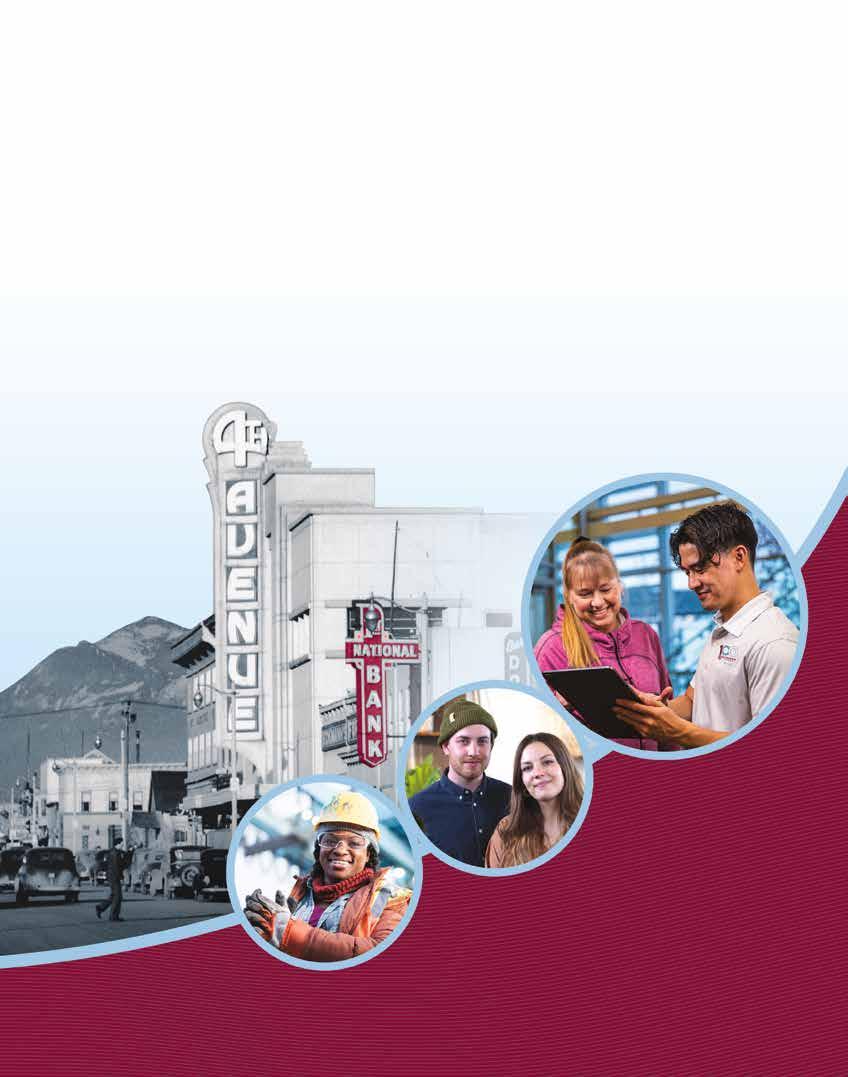
For some, it’s expanding operations to a new community. For others, it’s investing in technology to create new opportunities.
At First National, shaping tomorrow is our commitment to you.
Whether you’re a first-time entrepreneur or an established business, you can count on a century of local experience and innovative solutions to help you succeed today and tomorrow.
NMLS# 640297
Shaping Tomorrow Since 1922 FNBAlaska.com
By Flora Teo and Beth Barnes
 By Tasha Anderson
By Rachael Kvapil
By Tasha Anderson
By Rachael Kvapil
 By Sarah Erkmann Ward
By Sarah Erkmann Ward
20
OF
Educating
financial
work
and entrepreneurship
JUNIOR ACHIEVEMENT
ALASKA CELEBRATES 50 YEARS
young Alaskans in
literacy,
readiness,
22 2023 ALASKA BUSINESS
OF FAME
HALL
LAUREATES
26 TO TEACH AND TO SERVE JA’s high-achieving educators and volunteers
32 UPPER
Helping small businesses and nonprofits find a marketing niche
By Scott Rhode
ONE STUDIOS
30 FROM THE MOUTHS OF JA CEOS JA Biz Camp 2022 60 WHERE OH WHERE HAVE WAREHOUSES GONE? Creative uses of industrial storage space
ASCI
6 | January 2023 Alaska Business www.akbizmag.com Alaska
is published monthly by Alaska Business Publishing Co., Inc. 501 W. Northern Lights Boulevard, Suite 100, Anchorage, Alaska 99503-2577; Telephone: (907) 276-4373. ©
No part of this publication may be reproduced without written permission from the publisher. Alaska Business accepts no responsibility for unsolicited materials;
returned unless accompanied by a stamped, self addressed envelope. One-year subscription is $39.95 and includes twelve issues (print + digital) and the annual Power List. Single
$5.99 for the July & October issues. Send subscription orders and address changes to circulation@akbizmag.com. To order
JANUARY 2023 | VOLUME 39 | NUMBER 1 | AKBIZMAG.COM
SPECIAL SECTION: JUNIOR ACHIEVMENT SPECIAL SECTION: INDUSTRIAL SUPPORT SERVICES 54 EQUIPMENT
A temporary toolbox has the right equipment at the right time
By Vanessa Orr
By Scott Rhode
Junior Achievement
Business (ISSN 8756-4092)
2023 Alaska Business Publishing Co. All rights reserved.
they will not be
issues of the Power List are $15 each. Single issues of Alaska Business are $4.99 each;
back issues ($9.99 each including postage) visit simplecirc.com/back_issues/alaska-business.
CONTENTS
RENTALS
68 CONNECTING WITH COMMUNITIES 9 tips for resource development communications
74
When businesses have questions, private research firms have answers
WORTH
FOR Slow but steady progress for the Donlin Gold development
CLARITY FROM CONFUSION
By Tara O’Hanley 80
WAITING
By Alexandra Kay

























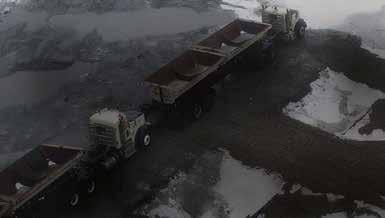



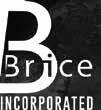
STGINCORPORATED.COM | BRICEINC.COM Helping Rural Alaska Thrive Remote Work? No Problem.
Photo: Phase 2 construction of the Lower Yukon River Regional Port in Emmonak.
I enjoy the holidays and the progression of themes they follow, particularly in Alaska. In October the Permanent Fund Dividend launches the shopping season, which benefits the state’s communities, whether Alaskans use the dividend for debt relief, to invest in projects, or just for fun. Then we move into Thanksgiving, and we shift our focus to gratitude and sharing, both among our loved ones and with those we don’t know personally but know need help. Whatever your religious background (or lack thereof), December holiday season traditions encourage families and friends to gather together and be inspired by the potential for goodness that people have. And then the New Year rounds it out, when we take stock of the past and make plans for the future.
Time moves forward unceasingly, but the cyclical nature of our planet and the impact that has had on our culture has created these yearly opportunities to reflect on the things that truly make our lives rich and what’s been and what’s to come.
Every issue of Alaska Business features new and timely editorial content, but it also has elements that follow annual routines, specifically our special sections. Sometimes this feels a little confining: every special section we feature is one that I’ve helped craft several times, so I’m back in the same space again. But it’s also a moment to inspect the previous year’s special section: how was it successful, and what was it missing? How can the weaker portions be made stronger and the good content made even better? It’s incredibly satisfying to plan and execute a project better than I did before, and it’s an opportunity I’m grateful for.
When I took over this position a few years ago, one of the areas I saw for improvement was the special sections. I wanted to make them truly “special,” and to accomplish that I worked closely with Art Director Monica Sterchi-Lowman to find a photo essay and a guest author for each one. Whether or not we found guest authors or a photo essay every month, over the year we found that reserving space for high-quality, engaging photos and inviting experts in the community to contribute their thoughts hit our goals exactly.
We’re taking that methodology and running with it, and that is where you come in. We know many business leaders in the state, and we’re aware of many exciting projects and photo opportunities, but we certainly don’t know all of them, and we may not be aware of what you’re involved in.
You do—and we want to feature the amazing work you’re doing. Send me information on the projects you’re working on; send me the incredible photos that you’ve taken; call or email me about ideas and information you have that would benefit our readers in a guest author piece.
Our business community is rich because of your work, and I want to help you share it.
EDITORIAL STAFF
Managing Editor Tasha Anderson 907-257-2907 tanderson@akbizmag.com Editor/Staff Writer Scott Rhode 907-257-2902 srhode@akbizmag.com Editorial Assistant Emily Olsen 907-257-2914 emily@akbizmag.com
PRODUCTION STAFF
Art Director Monica Sterchi-Lowman 907-257-2916 design@akbizmag.com
Design & Art Production Fulvia Caldei Lowe production@akbizmag.com
Website Manager Taylor Sanders webmanager@akbizmag.com
Photo Contributor Kerry Tasker
BUSINESS STAFF
President Billie Martin VP & General Manager Jason Martin 907-257-2905 jason@akbizmag.com VP Sales & Marketing Charles Bell 907-257-2909 cbell@akbizmag.com
Senior Account Manager Janis J. Plume 907-257-2917 janis@akbizmag.com
Senior Account Manager Christine Merki 907-257-2911 cmerki@akbizmag.com

Accounting Manager James Barnhill 907-257-2901 accounts@akbizmag.com
CONTACT
Press releases: press@akbizmag.com
Tasha Anderson Managing Editor, Alaska Business
Postmaster: Send address changes to Alaska Business 501 W. Northern Lights Blvd. #100 Anchorage, AK 99503
AKBusinessMonth

FROM THE EDITOR
#1
alaska-business-monthly AKBusinessMonth akbizmag VOLUME 39,
8 | January 2023 Alaska Business www.akbizmag.com




www.sessd.com
CALL
BROADBAND COVERAGE THROUGHOUT ALASKA
BROADBAND YOU CAN COUNT ON COMMAND THE ADVANTAGE
High-speed broadband service from SES Space & Defense provides Alaskan communities and businesses with fast and cost e ective connections to the Internet and their networks. Through a robust, reliable and secure communications infrastructure, our customers get their bandwidth with no data caps or extra fees. When you need reliable and customized service on a site-by-site basis command the advantage
+1 800 330 0784
HIGH-SPEED
2023 Alaska Economic Forecast

Ready for recovery, dragged by workforce woes
By Katie Pesznecker
As Alaska continues climbing out from the COVID-19 pandemic, the state’s economy remains among the nation’s lowest performing, yet other indicators suggest potential for growth and recovery in 2023 and beyond.
While nearly half of other states have rebounded, Alaska is still reaching for pre-pandemic job levels, according to the October 2022 Alaska Economic Trends report published by the Alaska State Department of Labor and Workforce Development. Furthermore, a study published in November 2022 by the Alaska Center for Economic Development at UAA made a case that, for the last seven years, Alaska’s economy ranked “at or near the bottom” in key economic health measures compared to its national counterparts.
A major reason Alaska has continued to struggle is that, before the pandemic hit, the state was already in recovery mode, having barely come
out of a three-to-four-year recession, says Neal Fried, an economist with the State of Alaska.
“Pre-COVID, the American economy was red hot, and had a lot of energy or momentum, and nationally that momentum has sort of picked up again, in a big way,” Fried says. “We didn’t have any momentum when we went into COVID, and we still don’t. We’re lagging. The last time we looked, as far as recovery back to even pre-COVID days, we’re 47th in the country.”
This has happened before, Fried says: Alaska’s economy suffered and the state lost workforce numbers “when the American economy was red hot and ours wasn’t. It’s not necessarily counter cyclical, but it does make things here slower.”
Where Are the Workers?
Many economic watchdogs point to workforce woes as a foundational problem to turning things around
in Alaska. With “help wanted” signs peppering shop windows and unemployment numbers among the lowest nationally, Alaskans continue to ponder: where are the potential workers?
A primary misconception rooted in the pandemic’s early days was that people were simply choosing not to work. Critics painted pictures of individuals skipping job interviews for video games and stimulus checks.
That’s simply not true, Fried says. What is true is that fewer people are moving to Alaska, shrinking the labor pool.
“It’s not that everyone’s getting in their U-Hauls and heading down the highway,” Fried says. “What’s really happened—and this has happened before, just not to the extreme—is because the national economy is doing so well for the last decade and even today, people don’t move. They’re going to stay close to where they are. As long as that condition exists, it’s
FINANCE
Alaska Business 10 | January 2023 Alaska Business www.akbizmag.com
going to be more difficult for Alaska to attract workers.”
Another factor, according to Bill Popp, president and CEO of the Anchorage Economic Development Corporation (AEDC), is that younger workers are leaving, and they aren’t coming back.
Anchorage has seen a net outmigration trend for about eight years, but it has worsened since COVID-19, and that’s a problem for local employers, Popp says.
“We’re seeing a significant loss of key portions of our population related to workforce,” he says. “Our workforce decline over the last several years is now totaling over 15,000 lost workingage adults from the Anchorage population. That’s a pretty significant impact, and we’re seeing it manifest itself in extremely low unemployment rates in Anchorage.”
US Census Bureau data says about one-third of Anchorage’s 16- to 26-year-old demographic had left the city; only a fraction remained in Alaska, and the remainder relocated Outside. These younger Alaskans are leaving and aren’t moving back, just as Baby Boomer-generation workers are entering retirement, Popp says.
“It’s a significant loss of our most experienced high-wage earners in the economy,” Popp says. “So we have a lack of people at the entry level, a lack of people in the mid-career level, and a significant lack at the upper tier of our workforce, and it’s becoming a real challenge for our city.”
August and September 2022 unemployment for the Anchorage area was 2.9 percent, Popp says. That pencils out to about 4,400 people in the Anchorage area looking for work; meanwhile, AEDC estimates there are three times as many jobs available.
The outward population flow is compounded by a shortage of inward migration. “Alaska is very dependent on people moving here,” Fried says. “We have more turnover than any other state in the United States, so as long as the American economy outperforms us, it’s going to be hard for us to turn that population picture around.”
But it doesn’t have to be that way. “The idea young people can’t find opportunities here is just a bunch of baloney,” Fried adds. “It’s simply not true.”
The Current Economic Reality
Alaska is adding jobs, but not as quickly as the rest of the country on average.
The most recent state data shows 4 percent year-over-year private sector job growth statewide and 3 percent growth when public sector jobs are included. This remains lower than pre-pandemic growth rates, says Mark Edwards, Northrim Bank’s chief credit officer and bank economist.
In comparison, US employment was 1 percent above its 2019 level.
But adding jobs is not in itself a solution, Edwards says. The decrease in rate of young people entering the workforce along with the aging population and retirements are compounded by fewer women in the workforce, too, and supply chain issues are further complicating economic growth.
“Overall, the economy is underperforming its full potential,” Edwards says. “Supply is not keeping up with demand. There is unmet demand because of a lack of supply of goods and services. With less workers, there are less services being provided than possible. With less goods crossing the borders due to bottlenecks in the supply chain, there is a reduction in the total amount of commercial activity.” Those factors prevent the economy from meeting its full potential.
Another limiting factor, Edwards notes, is pandemic rescue funds, which pumped an extra $6 trillion into the US economy. “That led to an extremely large expansion of the money supply, and that’s always inflationary unless the economy could grow at the same rate as the money supply, and it couldn’t,” Edwards says. “This means the existing currency becomes less valuable when it’s diluted by a lot of new money.”
President & CEO
Anchorage Economic Development Corporation
“We’re not quite back up to the same level of employees; we’re about 10,600 jobs short from where we were,” Edwards says. “We’ve recovered most of the pandemic lows, but not all of them.”
COVID-19 wiped out nearly 26,270 jobs statewide in 2020. According to the October 2022 Alaska Economic Trends report, employment is up significantly from pandemic lows but still 3.9 percent below August 2019.
In these conditions there will inevitably be winners and losers, Edwards says. Businesses that can get the supplies they need and are able to retain employees will do well because of excess cash in the market, “but if you have supply or labor shortages or are having to pay more for goods or employees, inflation can really have a negative effect on
business,” he adds.
In this environment, businesses need a higher rate of return on investment to counterbalance the cost of borrowing, which means less risks are generally taken as projects are vetted at a higher hurdle rate, which can be “a headwind to the economy overall,” Edwards says.
Where Does Alaska Go from Here?
Alaska has dug itself out of busts before, but the lessons of the past may
your
“So we have a lack of people at the entry level, a lack of people in the mid-career level, and a significant lack at the upper tier of our workforce, and it’s becoming a real challenge for our city.”
Bill Popp
www.akbizmag.com Alaska Business January 2023 | 11
not apply to the current struggle.
“This is not Alaska of the ‘60s, ‘70s, ‘80s, and maybe early ‘90s,” Fried says. “We do pay a wage premium here, but that premium is way smaller than it used to be. The ‘let’s go to Alaska to make a lot of money’ thing, that’s kind of gone away.”
Wage erosion means Alaskan employers must get more creative to compete for workers, Popp says. This should include looking at housing solutions, childcare affordability and availability, investing in a healthy school system, and more. “We’re going to need to start thinking about how we compete as a state and specifically how Anchorage configures itself to compete against hundreds of other cities across the United States that are out there aggressively competing for workforce,” says Popp.
From Gloom to Boom
When gauging current and forwardgoing economic health, Northrim’s Edwards considers delinquency rates from the Mortgage Bankers Association survey. Covering about 90,000 Alaskan-held mortgages, the rate tracks clients thirty days late or more on mortgage payments.
In 3rd Quarter 2022, the US delinquency rate was 3.6 percent compared to Anchorage’s 2.6 percent.
“What this shows me is Alaska is healthy,” Edwards says. “People are able to stick in their homes. If you don’t have foreclosures, you don’t have a supply of distressed homes, and that’s good for the housing market.”
Edwards was also encouraged by the Alaska Department of Revenue sources book, which predicted oil production would increase from 491,000 barrels a day at present to 585,000 in 2031.
“It’s been a while since we’ve seen the state forecasting increases,” Edwards says, noting the planned Willow and Pikka developments, their anticipated production levels, and the associated jobs that would support both development and operations phases.
Oil and gas jobs are generally the highest-paid jobs in Alaska’s economy, “and these multibillion investments are really stimulative to all the service-providing jobs in the state,” Edwards says. “Alaska can
Mark Edwards EVP/Chief Credit Officer/Bank Economist Northrim Bank
do well to provide some stability in these markets, and it might even help incentivize natural gas exports or other industries we’ve been talking about for quite a while. It might actually make Alaska very attractive to certain countries that want to guarantee their supplies of energy.”
Overall, the October 2022 Alaska Economic Trends report predicts a slow recovery for oil and gas jobs. From peak employment in 2015 through 2021, that industry
lost 8,406 jobs in Alaska. By 2030, the state’s report predicts total job numbers will “settle slightly above pre-pandemic job counts.” During the same period, the report predicted mining will add about 600 jobs, mostly through ongoing exploration and existing projects.
Alaska has many opportunities in resource-based industries—in timber, too, Edwards says.
“We just haven’t been able to guarantee some of the access to supply,” he says. “The story of Alaska has always been access to natural resources, not necessarily the abundance of them. It’s more a question of legal access and environmental issues. In a challenging global economy, I would say that helps tip the balance in Alaska’s favor to help approve those types of projects.”
Other opportunities in Alaska’s economic future are the stable fishing industry, federal military investment, the ongoing and promising rebound of the tourism industry, and transportation.
While Ted Stevens Anchorage International Airport thrived with cargo activity during the pandemic, a slowdown in US purchasing from Asian markets combined with other supply chain woes are complicating factors, Popp says.
“But we think, net net, we will see reasonable growth in air cargo, and that will grow jobs in airport operations,” Popp says. Businesses counting on air cargo growth are already investing in more infrastructure at the airport.
With job growth predicted across many markets, economic watchdogs are mindful of the barriers. In general, the national economy has outperformed Alaska’s for more than a decade, and even as growth is predicted, potential is tempered by labor market shortages.
“The American economy was burning hot prior to 2019, got slowed down because of COVID, and recovered pretty nicely and pretty quickly,” Fried says. “The country has fully recovered. There are now more jobs in the United States than there have been in its history. There are more people employed than ever before in America. That is not true in Alaska.”
“The story of Alaska has always been access to natural resources, not necessarily the abundance of them.
It’s more a question of legal access and environmental issues. In a challenging global economy, I would say that helps tip the balance in Alaska’s favor to help approve those types of projects.”
12 | January 2023 Alaska Business www.akbizmag.com
See the possibilities with Credit Union 1.



Each day, we live our mission to help members achieve their financial goals by focusing on excellent service and value. We are Alaskans helping Alaskans, and we’re proud to do so.
Learn more at cu1.org / 907.339.9485 Insured by NCUA

Your Money or Your Life File Combatting ransomware threats
By Tracy Barbour
Ransomware is the top cybersecurity threat to businesses today—and it is expanding at an alarming rate. In 2020, Alaska reported a record number of complaints about ransomware and other cybercrimes to the FBI's Internet Crime Complaint Center (IC3). On a perperson basis, Alaska recently ranked as one of the country’s least secure states, according to Todd Clark, president of DenaliTEK and Cybersecure Alaska. “Per capita, Alaska had more cybercrimes reported in both 2018 and 2019 than any other state in America,” he says. “Alaska was 4th least secure in both 2020 and 2021.”
“Alaska is home to many military bases, energy companies, and government agencies,” says David W. Monroe, a cybersecurity consultant with Computer Task Group (CTG), which provides digital transformation solutions. “These industries and organizations have always been prime targets for ransomware attacks. Recently, news agencies in Alaska have been reporting on an increase in attacks on educational institutions as well.”
In the past few years, cyberattacks in Alaska have trespassed a variety of entities: Ravn Alaska, the formerly-

named Alaska Department of Health and Social Services, the Alaska Court System, the Matanuska-Susitna Borough, and the city of Valdez. As a preemptive move, the Alaska Division of Banking and Securities recently urged financial institutions and industries to monitor current events in Ukraine and Europe. “Events could pose significant cybersecurity risks for the US financial sector,” the alert said.
Ransomware is an insidiously debilitating form of malware. Once installed, the software encrypts all the files it can find on a machine, along with any shared networks and devices. Then it locks users out of devices or blocks access to files until they pay a ransom or meet some other demand in exchange for decryption. “One of the most common methods of attack is to exploit the human factor through malicious phishing emails with infected attachments or links to malicious sites,” Monroe says. “These can include not only executable files but common file types, including MS Office files such as .doc and .dot that are easily opened with popular desktop applications.”
A ransomware infection can wreak havoc on victims, causing extensive business interruption losses, legal expenses, and reputational damage.
The average cost of a ransomware breach was $4.62 million in 2021, according to IBM’s “Cost of a Data Breach 2021” report. That figure does not include the ransom payment, which represents only 15 percent of the total cost of an attack.
“By 2025, cybercriminals are expected to take home over $10 trillion,” says Keri Parsons, security culture and engagement manager at GCI. “These are not your teenage hackers hanging out in mom’s basement, rocking a dark hoodie, and drinking excessive amounts of energy drinks. Today’s adversaries are organized criminals, operating with nation-state backing and their own ‘call centers’ of employees. Many are becoming household names, like CONTI or REvil, but that isn’t their ultimate goal. Ideally, they want to make as much money as quickly as possible.”
Severity of the Threat
The pervasive nature of the ransomware problem affects all types of companies, sectors, and industries. In 2021, fourteen of the country’s sixteen critical infrastructure sectors had at least one member that fell victim to a ransomware attack, based on IC3 reporting. The most frequently victimized sectors were healthcare and public health, financial services, and information technology.
Todd Clark
DenaliTEX | Cybersecure Alaska
Alaska Business Archives
14 | January 2023 Alaska Business www.akbizmag.com TELECOM & TECH
The changing nature of data storage exposes organizations to ransom attacks, according to Parsons. “So many organizations are moving to digital storage and processes, whether on their own servers or in the cloud,” she says. “Gone are the days of file cabinets stacked twenty deep in a basement somewhere—only susceptible to fire or loss— and your biggest concern was digging out the right information on time.”

With ransomware, that potential risk comes from all angles. Parsons explains: “Did you properly back up your data? Is it redundant? What happens if it is disclosed to anyone and everyone in the world? Can your business function and continue to operate without access to it for a week? A month? A year? How can you verify the accuracy and completeness of it once it is returned? Or, worstcase scenario, you never get the data back. Ever. Every organization needs to consider these real threats brought on by ransomware.”
Ransomware is also such a major threat because it is so successful. According to Cybersecurity Ventures, ransomware damages were more than $10 billion in 2021—more than 57 times the number in 2015—and expected to reach $265 billion annually by 2031. “Cybersecurity Ventures also noted that over 50 percent of attacks are successful to some degree and that, unfortunately, 45 percent of ransomware victims paid the ransom, showing a successful rate of return,” Monroe says.
Virtually all ransomware attacks today are “doubleextortion” scams that demand a ransom to unlock data and return exfiltrated or stolen data, according to IBM Security X-Force’s 2022 Threat Intelligence Index. Ransomware perpetrators used to launch malware and collect the ransom payment, and that would be the end of the attack, Clark says. Now they are apt to steal personally identifiable information and other data—to commit additional

www.akbizmag.com Alaska Business January 2023 | 15
Keri Parsons GCI
“I think too many small business owners and key decision makers abdicate 100 percent of cybersecurity to the IT department and IT provider. So much of the prevention needs to make it into the business plan and be discussed at a high level.”
Todd Clark President DenaliTEK and Cybersecure Alaska
extortion later—and then ransom the system for an immediate payoff. However, so many companies today are prepared with backups and can avoid paying a ransom that cybercriminals are threatening to publicly expose the stolen data on the internet.
That’s exactly what happened with Australian health insurance provider Medibank. Unidentified hackers stole the health records of millions of Medibank customers in October and then released them on the dark web in November after the company refused to pay the ransom. The disclosed data also included personal information such as names, addresses, dates of birth, phone numbers, email addresses, Medicare numbers, and passport numbers.
As another trend, there has also been an increase in attackers targeting service providers with ransomware, according to Cindy Christopher, director of managed IT product and sales for Alaska Communications. “Let’s say it’s a smart home device, which disables the service for end-user customers,” she explains. “The attackers contact
the service provider’s customers saying, ‘We’ll restore your service if the provider pays the ransom.’ This type of attack is extremely devastating to your business reputation and would be hard to recover from.”
As a positive trend, Clark Logan, vice president of the nonprofit ArcticShield, is seeing a growing sense of urgency to spread the word—both in Alaska and nationally—about ransomware. “To give some insight, ransomware as a whole has been around since 1989, and only now in 2022 are we seeing this larger uptick in response and preparedness,” he says.
Detection, Prevention, and Recovery
The mere idea of ransomware can be terrifying for businesses, especially given its complexity and potential negative impact. But the risk is manageable, Clark says. “The tech crowd has the prevention techniques covered pretty well, but what they can’t do is get key decision makers to take care of the responsibilities they have in regard to cybersecurity,” he says. “I
think too many small business owners and key decision makers abdicate 100 percent of cybersecurity to the IT department and IT provider. So much of the prevention needs to make it into the business plan and be discussed at a high level.”
Clark launched Cybersecure Alaska to enhance cybersecurity awareness among business decision makers. The nonprofit organization is also working with lawmakers to foster some type of “safe harbor” legislation— as a growing number of other states have done—that would protect Alaska businesses that implement a cybersecurity plan. “Cybersecure Alaska envisions Alaska becoming the most cybersecure business community in America by 2026,” he says.
ArcticShield, which has a similar vision, also strives to help Alaska organizations circumvent cyberattacks. “ArcticShield aims to build and foster a thriving cybercommunity where varied professionals from all backgrounds (technical and non-technical), as well as businesses of all sizes, can come together in unity
Try to connect the Kelley Connect service with the Alaska location. IT Services Digital Transformation Imaging / Printing Mail Solutions / Sending Print Shop Answer: We actually do everything at all of them. Locations Services Anchorage Fairbanks Juneau Ketchikan Soldotna Shop local for superior service today! TV the way it should be with DISH Live TV, On Demand and streaming all in one place. Best value with 3-Year TV Price Guarantee + FREE Locals Requires credit qualification and 2-year commitment. Other restrictions apply. Satellite Alaska 833-925-5291 2208 Cleveland Ave., Anchorage, AK 99517 PREM_753190 16 | January 2023 Alaska Business www.akbizmag.com
to prevent and recover from not only the myriad of ransomware attacks but the entire gamut of cyber-related threats to the greater goal of educating and bolstering critical infrastructure,” Logan says. “We ourselves can run a thorough analysis of your infrastructure as a business owner in a simulated attack and report on where you have vulnerabilities while coaching/advising on best practices to help pave a path to success.”
From Logan’s perspective, the best practice for ransomware prevention is user training. Companies should train their employees to look for “bad” email links in the headers or misinformation in the email or signature, to lock their computer when it’s not in use, and to use a password manager application so they can use complex passwords without having to remember them.
If ransomware does strike, Logan says, the best strategy for victims is not to pay the ransom. Instead, they
should follow these basic steps:

x Step 1: Turn off the network device/modem immediately and power down computers.
x Step 2: Contact their IT professional if one is available; otherwise, do the next step.



x Step 3: Identify the domain controller and all attacked machines one by one and revert to the “gold” backup image. If no backup is available, reinstall the operating system.
It takes an average of twenty-two days to recover from a ransomware attack, according to global cybersecurity solutions provider Sophos. Businesses can take steps prior to a breach that can greatly improve their response, says Christopher. For example, companies should have an incident response plan that outlines response and recovery steps, and the executive leadership or business owner should understand the details of the plan.


CLASS OF 2023 LAUREATES 35 TH ALASKA BUSINESS HALL OF FAME 2023 PETER GRUNWALDT Premier Alaska Tours TIM WORTHEN Premier Alaska Tours GAIL SCHUBERT Bering Straits Native Corporation GREG ROMACK Davis Constructors JEANINE ST. JOHN Lynden Logistics THURSDAY, JANUARY 19, 2023 D ena’ina Center | 5:30 PM PLEASE JOIN US Reserve seats at alaskabusinesshalloffame.com Celebrating the past, present, and future of Alaska business RSVP Please contact Tiana at 907-344-0101 or alaska.ja.org for more event updates. www.akbizmag.com Alaska Business January 2023 | 17
Clark Logan ArcticShield
mom’s
rocking
and drinking excessive amounts of energy drinks. Today’s adversaries are organized criminals, operating with nation-state backing and their own ‘call centers’ of employees.”
“These are not your teenage hackers hanging out in
basement,
a dark hoodie,
Security Culture and
Keri Parsons
Engagement Manager GCI
Organizations should also think about business continuity. “Recovering from an attack can be a lengthy process,” Christopher says. “Your plan should outline how you’ll continue to conduct business and serve your customers or community during this time.”
After a breach, the first step is to identify affected systems and immediately isolate them. “After this initial step, you should consult with your incident response team and start walking through the steps of your plan,” Christopher says. “Depending on your industry, you may need to inform regulatory agencies within a required period of time. Ransomware is a crime, and you may need to consult law enforcement.”
Parsons agrees. She encourages companies to check with their legal team to see when and what they can share following a security breach. They should get in the mindset that law enforcement and the FBI are real assets when it comes to a ransomware attack. And, if they haven’t already done so, they should set up their data for offline backups. “And then don’t just leave it there,” she says. “Practice and test the restoral process to guarantee you can recover your systems when the time comes. So many organizations skip this step and discover at the worst possible moment that their data is somehow inaccessible.”

Aside from all the technical tactics, Clark advocates getting cyber insurance and paying close attention to the coverage requirements. Insurance companies have been losing money on cyber insurance, and claims-related denials are going up. “Get the right level of cyber insurance and make darn sure you are meeting every requirement of that policy to get coverage,” he says.
Enhancing Cybersecurity Expertise
The growing complexity and risk of ransomware makes it more critical for businesses to enhance their cybersecurity knowledge and/or seek help from an outside expert. Companies like DenaliTEK, CTG, GCI, and Alaska Communications offer a wide range of cybersecurity solutions. Free
technical assistance is also available from nonprofits like ArcticShield and Cybersecure Alaska as well as government agencies. For example, the National Cybersecurity Alliance (NCA) and CISA co-led Cybersecurity Awareness Month in October to provide information to help individuals and organizations stay safe online.
Also in October, the US Small Business Administration (SBA) held its first-ever Small Business Cyber Summit, which featured cybersecurity experts sharing best practices and practical defensive tools. During the virtual event, Microsoft Vice Chair and President Brad Smith urged people to employ multifactor authentication, software updates, and cloud-based security solutions. He also advised business owners to rely on a local IT partner, instead of trying to tackle all the requirements of cybersecurity on their own.
Christopher concurs. “Your business needs an expert who does this for a living, and it’s not always feasible for small businesses to hire and maintain internal IT staff,” she says. “That’s why many benefit from working with a trusted partner who can put together a solution that meets your needs and budget.”
When selecting a provider, companies should look for a partner who understands their business and industry. “The more invested your partner is in your business, the better the outcome,” Christopher says. “In addition to being a trusted partner for security services, we recommend a third-party security audit at least once per year. Audits are a very important and worthwhile investment.”
Logan reminds all business owners that, as the decision makers, the responsibility for cybersecurity—thus the risk—ultimately falls upon them, not their third-party cybersecurity service provider. “As such, train yourselves and invest in your own knowledge.”
To enhance their knowledge, business owners and others can access free ransomware resources from the CISA (cisa.gov and stopransomware.gov), US Small Business Administration (sba.gov), and Global Cyber Alliance (globalcyberalliance.org).
18 | January 2023 Alaska Business www.akbizmag.com
Cindy Christopher Alaska Communications
“So many organizations are moving to digital storage and processes, whether on their own servers or in the cloud… Gone are the days of file cabinets stacked twenty deep in a basement somewhere—only susceptible to fire or loss—and your biggest concern was digging out the right information on time.”
Keri Parsons Security Culture and Engagement Manager GCI

Junior Achievement of Alaska Celebrates 50 Years
Educating young Alaskans in
financial literacy, work readiness, and entrepreneurship

 By Flora Teo and Beth Barnes
By Flora Teo and Beth Barnes
2023 is particularly special for Junior Achievement (JA) of Alaska as we celebrate our 50th Anniversary. Fifty years ago in 1973, C. H. Rosenthal, Joseph P. Wiley, Dave Stein, and Les Pace established an organization to teach financial literacy, work readiness, and entrepreneurship to Alaska’s youth, helping them acquire the skills they needed to succeed in a changing economy.
The initial endeavor was called “Stop ‘Em from Droppin,” a partnership with
the then-Anchorage Borough School District, business community, and S.A.V.E. aimed at allowing students, “through ownership of their own companies, to develop a realization of honesty and dependability in the world of work” and to “instill in young people a sense of responsibility for the successful functioning of American business and government during their lifetime.”
JA's mission is even more relevant today. By activating corporate and community volunteers to deliver JA
programs to our youth, we broaden horizons and inspire students to achieve their goals. During school closures in 2021/2022, more than 150 volunteers delivered programs both in person and virtually to K-12 youth and positively impacted the lives of more than 10,000 students. This was possible because of the strength of JA’s traditional programming and our resolve to bring to Alaska innovative programming like JA Finance Park Virtual, JA Inspire Virtual, and the JA Biz Camp.
20 | January 2023 Alaska Business www.akbizmag.com JUNIOR ACHIEVEMENT
Our students tell us these experiences have changed the trajectory of their lives.
x Financial Literacy: Nearly 2,000 Alaskan students experience JA Alaska's Economics for Success and Finance Park Virtual programs annually, learning about saving, investing, budgeting, taxes, credit scores, and investing.
x Work Readiness: More than 4,000 students were prepared for the world of work by participating in JA Inspire Virtual with companies such as AT&T, Wells Fargo, Bristol Bay Native Corporation, Kaladi Brothers Coffee, ConocoPhillips Alaska, Saltchuk, First National Bank Alaska, Northrim Bank, Lynden, and more.
x Entrepreneurship: At the JA Biz Camp, students in grades K-8 spent a week over the summer creating business plans and pitching them to local "sharks," or potential business investors. Next year, JA of Alaska would like to have enough support to send a group of students to the Junior Achievement National Student Leadership Summit to compete with other states.
x Rural Outreach: JA launched the Rural Alaska Initiative in 2009, bringing hands-on programs and volunteers from the business community to K-12 schools in some of the most remote areas of the state. Starting with the village of Larsen Bay on Kodiak Island, the initiative has expanded to include nearly thirty villages on an annual basis.
x After School Programming: Students need safe places to learn after school. JA is proud to contribute to this cause by providing students with opportunities to learn about financial management and entrepreneurship with local organizations, including the Anchorage Public Libraries, Boys & Girls Clubs, Girls on the Run Southcentral Alaska, 21st Century Learning, various homeschool programs, and more.
The current strategic initiative of JA of Alaska’s board of directors, Focus on the Future, will find solutions to address the unique needs of Alaska’s future workforce, including new leadership
opportunities for high school students, innovative programming for elementary and middle school students through technology, and immersive learning experiences that make a lasting impact on young people.
To you, the members of the business community, our message is simple and sincere: thank you! Your involvement, contributions, and—most importantly— shared passion for our mission ensures every child is afforded the opportunity to succeed and achieve their full potential in life. It is an honor to be considered the business community’s own nonprofit organization.
The future of our JA students is bright, and we are honored to be working with you to fulfill our mission of inspiring and preparing young people to succeed in a global economy.
Cheers to the next fifty years!
Photo Arts by Jana | Monica Sterchi-Lowman
Flora Teo is the President of Junior Achievement of Alaska.
www.akbizmag.com Alaska Business January 2023 | 21 JUNIOR ACHIEVEMENT
Beth Barnes is the Chairman of the Board for Junior Achievement of Alaska.
2023 Alaska Business Hall of Fame Laureates
 By Tasha Anderson
By Tasha Anderson
The Alaska Business Hall of Fame honors Alaskans who have made ongoing, significant contributions to the Alaska business community. They have established strong relationships within that community, donated their time and expertise to nonprofit and charitable causes, and built up the Alaska economy through their dedication, innovation, and leadership. The path that each laureate takes is highly varied, but they all start with a first job.
Below, we get to know the 2023 Alaska Business Hall of Fame laureates a little better, starting with their origin stories. To learn more about the laureates, the induction ceremony is being held January 19. Visit Alaska. ja.org for more details.
Greg Romack, Davis Constructors & Engineers
Greg Romack’s introduction to earning money was a common one: delivering morning newspapers. “My parents came out of World War II,” he explains, “so there wasn’t a lot of extra money. They were generous, but they just didn’t have anything to be generous with. So if I wanted a new bike or something, I would have to earn it, so
that motivated me.”
Romack grew up in a farm community in Idaho and attended college there. “The day after I graduated from college, three of us, we got into a car and drove to Alaska,” he recalls. “The phrase I use, and I’ve used this quite a lot, is: I wasn’t born here, but I got here as soon as I could.”
Romack and his friends planned to fight fires in Alaska. Unfortunately for their plans (but fortunately for local communities) it was a wet summer
and there were no fires to fight. “So we stayed in town and, out of all things, the three of us bought a car wash,” Romack says.
The car wash was on the site where the Sheraton Anchorage Hotel & Spa now sits and was called the Splash & Dash. “Regular people would drive through for their car wash, but we also had some clients who were [auto] dealers. If someone bought a car, they sent it somewhere to get it all cleaned up, so we had both the retail and commercial side.”
Romack says he knew from a young age that he was an entrepreneur and had a mind for business. He was initially hired by Jeff Davis, Davis Constructors & Engineers’ namesake, and he “knew right away that I liked everything about contracting. You make a bid, you get the work, you do the work, and you get paid for the work—it just fit really nicely for me.”
He attributes his and the company’s success in part to ethical and honest client relationships. He gives the example of the recently completed Aloft Anchorage Hotel at 36th Avenue and C Street. “We started the hotel just before the pandemic, and then tourism dropped off and was nonexistent. We started on the job site
Greg Romack
22 | January 2023 Alaska Business www.akbizmag.com JUNIOR ACHIEVEMENT
Glenn Aronwits
and needed to decide where to stop it. The conversation was: should we stop with the deep utilities in and then just complete the site work, or should we put the foundation in and freeze the foundation in? I remember telling them that, if it was my money, I wouldn’t put the foundation in,” Romack recalls. “It was so uncertain at those times that, as much as I would love to have done the job—and I ended up doing it—at the time I just didn’t think it was appropriate for them to spend their money when there was no occupancy of the hotel. We certainly could have used the work, but it just didn’t seem appropriate.”
customer interaction.’ So every job I’ve learned something new.”
It was after that job that she moved to Alaska and found her career.
“I went to a job center, and the job center back then would give you a typing test and other different tests and things to see what you had available in your skillset.” After the testing, the job center contacted St. John to see if she’d be willing to interview at Sohio, which became part of BP in the late '70s. “I knew nothing about the oil industry,” she recalls. “It turned out I got a job at
Sohio in the old C Street building which is now Northrim Bank’s headquarters.”
The next day the job center called to see if St. John would interview with the Anchorage Mayor’s office, but she had already accepted the Sohio job. “Who knows, I could have ended up being in the political spectrum as opposed to working for an oil industry company,” she speculates.
It was after working at BP that St. John accepted a position at Lynden. “I went from a big, multinational company to a family-owned private company, and I

Jeanine St. John, Lynden Logistics

“I have to think about my first job, because I wouldn’t go back to babysitting or something like that,” says Jeanine St. John. “My very first job where I actually paid taxes was working for the Internal Revenue Service,” she recalls with a laugh.
She believes she was about 15 years old, because she was able to work but unable to drive herself there and relied on her dad for rides. “I did learn a lot about how I didn’t want to work for the government,” she says. “But it was a great experience working. All my jobs have been great experiences.”
From working for the government, she moved into customer service, selling smoked meats and ice cream. There, she realized, “’Huh, I don’t think I want to be in the front-line of the
Jeanine St. John
www.akbizmag.com Alaska Business January 2023 | 23 JUNIOR ACHIEVEMENT
Junior Achievement
learned completely different skills. You are much closer to the actual business side of business when you're in a smaller private company in Alaska—and that was Lynden. And they were a fabulous family; they are a fabulous company … I miss them so much because I'm retired now, but I still see them, and they're my friends and my family.”
For St. John, work has always been a rewarding experience, and her advice to young people is to find their own path to that same outcome. “I tell every young person—it doesn't matter who it is—find what you like; find out what you're good at. Make sure whatever you do, you love your job… If you don't love your job, go find something else, because if you love your job you're going to be honest, you're going to be forthright, you're going to enjoy going to work every day.”
Peter Grunwaldt and Tim Worthen, Premier Alaska Tours
Peter Grunwaldt and Tim Worthen are co-owners and co-CEOs of their “third-party tour company,” as Worthen describes it. Premier Alaska Tours arranges hotel rooms, buses, trains, and every other component of an Alaska tour for Lower 48 tour operators. The Lower 48 tourism brand is executed and operated by Alaskan experts with the mission to “provide the highest quality Alaska land tours for guests that come to our state,” Worthen says.
The unique company—and unique partnership—has been working for Grunwaldt and Worthen since 1995. At the time, both men were working for another tour company that decided to shut down its operations. The pair contacted all of that company’s tourism clients and asked, “Would you like to do tours with us now and our brand new company that we just started today?” Their clients all agreed, says Worthen, which was the catalyst that Premier Alaska Tours needed to launch.

Today the two CEOs run the company in equal partnership. This allows them to meet separately with clients as decision makers while leaning on their unique strengths and skills to move the company forward. “Tim and I have a different style, and we have partnered incredibly well together over

the last almost thirty years,” Grunwaldt says. “He has a conservative style of, ‘We’re going to keep costs down; we’re going to watch the finances closely,’ and my style is more, ‘Gosh, I want to have really shiny wheels! I want to have a really nice building with all the bells and whistles.’”
He continues, “We’ve had a really nice balance of ‘How do we make sure that this partnership is successful together?’ and it’s been great.”
What they share in equal measure is a love for Alaska, their employees, and the tourism industry.
“One of the passions I have in life now in my old age is that I love talking to young people who are working around the company and say, Where are you going? What are your desires in life?
How can we move you through a job?” says Worthen. “Because you can be a mechanic on the train, you can drive a bus, you can rep at the airport when you’re young and getting started.”
Grunwaldt adds, “We've created an environment and a team in which we are really proud to be Alaskan, and we're really proud to be not only an Alaskan company but to contribute to other Alaskan businesses: stay at local Alaskan hotels, buy products where we can for our food and beverage operation, only serve Alaska beers on our train… If we can continue down that line of contributing to local Alaskan businesses, helping our friends grow their successful businesses, and buying Alaskan artwork to hang in our rail cars... Tourism is going to continue to grow, and I look forward to more and more Alaskans being involved in it.”
Gail Schubert, Bering Straits Native Corporation

Gail Schubert entered the workforce at the tender age of 6 or 7, participating in a youth corps program. She doesn’t remember how much she was paid or who exactly ran the program, but “it was thrilling to get a job,” she remembers. She and other young people did various jobs, such as operating floor polishers.
“I was really blessed along this road of life to be able to look at opportunities and really go from there,” Schubert says. “I’ve always worked and worked hard.”
Peter Grunwaldt
Gail Schubert
Tim Worthen
Junior Achievement
Junior Achievement
24 | January 2023 Alaska Business www.akbizmag.com JUNIOR ACHIEVEMENT
Kerry Tasker Alaska Business Archives
Another job from her youth was working on a fish line, long before the process was mechanized. “My aunt would cut the heads off of the fish, and I always stood next to her. My job was to slit the belly, pull the guts out, then slit the blood line, and then pass the fish down. It was really dirty work,” she says, laughing.

Like many of her fellow laureates, Schubert learned at a young age that she would need to work for the things she wanted. “Coming from a really large family, and there wasn’t always steady work for my dad or mom. You really had to do what you could if you wanted things for yourself; you really had to work for it. That was something that really stuck with me.”

Schubert’s large family comprised nine children that reached adulthood; two of her siblings passed in infancy because of childhood diseases “that would otherwise be cured nowadays,” she says. Her role model was one of her sisters, Rose, who became a nurse. As time went on, she decided to pursue medicine as a doctor. Schubert was the third sister to attend Stanford University, and by the time she graduated her attention had shifted to business. She attended Cornell University for business school, followed that up with law school, and worked as a lawyer in New York City, “where I worked for eight years until I decided that I just had to have a life,” she says with a laugh. “So I moved back to Alaska in 1992.”
When she joined Bering Straits Native Corporation, it had annual revenue of approximately $10 million, and Schubert worked with a small staff out of a small office. As the company has grown to see revenues above $450 million annually, Schubert says it has continually focused on hiring and training young people. “I think we have a moral obligation to do that,” she explains.


Schubert is inspired by young people today who know how to work hard and have an entrepreneurial spirit. “Sometimes when I’m watching TV, I see youth—and really young youth—that become successful to the point where they’re making a really great living. It just never ceases to amaze me how they look at something and decide, ‘There’s a void here,’ and decide to fill that void, and they see success from that.”

www.akbizmag.com Alaska Business January 2023 | 25 JUNIOR ACHIEVEMENT
To Teach and to Serve
JA’s high-achieving educators and volunteers
 By Scott Rhode
By Scott Rhode
Each year, JA of Alaska recognizes an educator and a volunteer who have gone above and beyond to support the program and Alaska’s students as they learn critical financial information and skills. According to JA of Alaska Executive Director Flora Teo, “Volunteers are the backbone of JA. We have a lot of talented, amazing leaders in our business community, and it is truly special when you see volunteers walk into a classroom and see the excitement on kids’ faces.”
While JA volunteers are critical for the program, it’s educators who work every day to make sure Alaska’s students are prepared for the future. “Alaska has amazing educators who rally for our students every day,” Teo says.
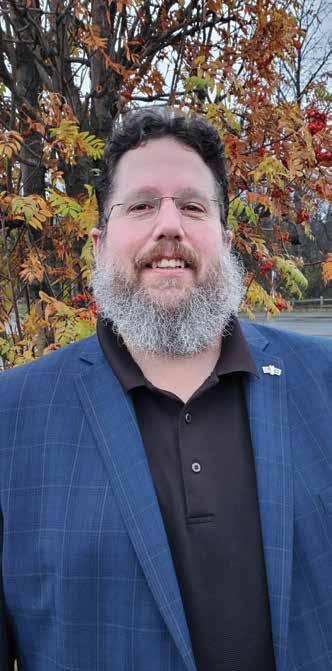 Andy Elliott
Andy Elliott
26 | January 2023 Alaska Business www.akbizmag.com JUNIOR ACHIEVEMENT
Sean Schubert Alaska Business Alaska Business
Educator of the Year: Sean Schubert





















Zombies infest Sean Schubert’s classroom at King Tech High School in Anchorage. The decorations are for Halloween (at the time of this interview), but they could easily unlive there yearround. Parked in front of the school, Schubert’s ride carries the license plate “INFCTN,” referring to the title of his 2012 novel about an Alaskan Undead Apocalypse, as the five-part trilogy grew to become.
JA of Alaska’s Educator of the Year is not trained as a teacher, but Schubert has taught himself to be a trainer. As the school’s workforce development coordinator, Schubert interacts with every student at King Tech. “If they’re looking for part-time work, I help them find that. If they’re looking for full-time summer work, I help them find that,” he says with the rapid-fire patter of a skilled wordsmith. He also counsels students on career steps after high school, helps them find scholarships, workshops their résumés, and instructs them in customer service, regardless of which trade they are studying.
Job placement is, in fact, Schubert’s trade. “I have a degree in English, but I discovered that I like doing this. This is my passion,” he says. After nearly twenty years working for the US Department of Labor’s Alaska Job Corps Center, Schubert worked for the State of Alaska before joining the Anchorage School District. His career flowed naturally to involvement with Junior Achievement.
One of the projects he’s most proud of is a virtual job fair while schools were closed for COVID-19, calling in contacts he’s made in the staffing world to help organize the statewide event for JA. “What I do is really the culmination of what a lot of people have done,” Schubert says, “so in being awarded this, I accept the award for everybody else who’s led the charge up to my point.”




Teo says, “Sean is a great example of an educator that connects students to employers by helping them see a future for themselves… Because of him, Junior Achievement had more than sixty students interview, with some receiving jobs during a time when employers were struggling to hire staff. Students are still getting hired because of the work that he did.”

Auditing, Review, Compilation Tax Consulting & Preparation Accounting & Payroll Management Consulting Election & Tabulation Services Personal Attention Let Altman Rogers help grow your business with big rm resources and the personal attention only a locally owned rm can provide. altrogco.com | 907-274-2992 Like You. Fiercely Independent 274 2992 Anchorage | Juneau | Soldotna www.akbizmag.com Alaska Business January 2023 | 27 JUNIOR ACHIEVEMENT
King Tech remains Schubert’s main occupation while he continues writing on the side. His most recent book, published in 2019 by Tennesseebased Permuted Press, extended the Alaskan Undead Apocalypse. His 2017 book, Fyre, broke from the series to explore a more mythological mood, still set in a ruined Alaska landscape. He has two more books in the works. “I do the writing thing just because it’s fun,” he says. “Getting published was kind of an accident.”
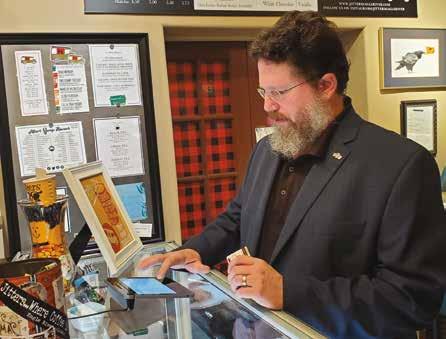
Volunteer of the Year: Andy Elliott
JA has been part of Andy Elliott’s life since he was going to high school in Indiana. His economics teacher offered extra credit for volunteering at a middle school class. “We made ink pens,” he recalls. “Part of that, you’d learn the difference between assembly line production or unit by unit and, depending on the product, which one is the best way to make something.”
Elliott set aside volunteering with JA for a decade, during which he enlisted in the US Army straight out of college. He was posted to Fort Richardson, where “Mr. Andy” taught the JA
curriculum at schools on base. Once out of uniform, he managed property with Weidner Apartment Homes for sixteen years until he lost his “why.” He discovered a new “why” by reflecting on his mother’s suicide in 1999, partly driven by financial distress.
To help others avoid and/or overcome money problems, Elliott became a

financial services professional. Zo Financial CEO Buddy Bailey suggested that he join New York Life, and now Elliott provides life insurance, investment advice, retirement planning, and long-term care arrangements.
“Once we’ve met and you’re my client, I view it as a lifelong relationship,” he says. “If you’re a young family, I’m gonna be there to see your children grow up, get their drivers licenses, go to prom, go to college, and make you grandparents.”
Now that he’s become a financial professional, he says his responsibility to JA has increased. “There isn’t anything required in schools about financial education,” Elliott observes. “Until then, we fill that role, or try to.”
His work, both with New York Life and JA, is an expression of his faith. “I view it as a way to love and serve,” he says. “Love has many forms, and that is one way to do it: by giving and serving.”
According to Teo, “People like Andy are great examples of how someone who loves what they do can share that enthusiasm with a young person through Junior Achievement and hopefully inspire them to find purpose and hope for their future.”
Although he is Junior Achievement Alaska’s Volunteer of the Year, Elliott acknowledges that he is one of many. “I’m very blessed to be able to do it,” he says, and he tries to inspire others, whether at church or in the office, to volunteer for themselves.
Alaska Business
Sean Schubert’s side gig as a horror author is no secret to students at King Tech High School.
A financial educator for kids through JA, Andy Elliott advises adults at his day job with New York Life, often meeting clients at Jitters in Eagle River.
28 | January 2023 Alaska Business www.akbizmag.com JUNIOR ACHIEVEMENT
Alaska Business
Greg Romack

on his induction into the 2023 Alaska
Business Hall

of
Fame
We appreciate and respect his 34 years of contributions to the Alaska construction industry


 DAVIS CONSTRUCTORS & ENGINEERS CONGRATULATES
DAVIS CONSTRUCTORS & ENGINEERS CONGRATULATES
Business Description: This company will plan your next family gathering, celebration, birthday party, et cetera. Parties include an on-site specialist and a consultation where the customer can provide details to make the event extra special. This business will plan events of all sizes.
Junior Achievement
From the Mouths of JA CEOs
JA Biz Camp 2022
In July 2022 Junior Achievement (JA) of Alaska launched its first Biz Camp with the goal to ignite the entrepreneurial spirit among young people in Alaska.
Campers were divided by grade level and spent the week developing their business plans while learning about leadership and teamwork through physical fitness with the support of their camp counselors.
Thanks to support from the Alaska Community Foundation and Cook Inlet Region, Inc., students walked away with a business plan ready to put into action, and four students went home with seed money for their idea.

As JA board member Ryan Cropper often says, “Big businesses start as small businesses.”
If you think your student would benefit from Biz Camp—and you’re right—registration for that and three
other new programs is now open at Alaska.ja.org.
x JA Startup Studio (Grades K-8)
June 5-8 | 9 a.m. to 4 p.m.
x JA Stock Market Summer Camp (Grades 9-12)
June 12-15 | 9 a.m. to 4 p.m.
x JA Biz Camp (Grades K-8)
June 19-22 | 9 a.m. to 4 p.m.
x JA Financial Planning Academy (Grades 9-12)
June 26-29 | 9 a.m. to 2 p.m.
Enjoy a selection of some of the incredible business ideas straight from the minds of Alaska’s youngest CEOs. We can’t wait to see what they’ll do next!
30 | January 2023 Alaska Business www.akbizmag.com JUNIOR ACHIEVEMENT
Business Name: PJ’s Perfect Parties JA CEO: Penelope
Business Name: Go Loans
JA CEO: Matt
Business Description: Having your child participate in sports can be expensive. Go Loans is a program designed for parents to take out microloans to help fund their child’s sports experiences and equipment. Parents can start saving as soon as the child is born, and family members can help invest in their family members’ talent easily.


Company Name: Survive-It Jacket
JA CEO: Cameron
Business Description: The Survive-It Jacket would be made of materials that can be repurposed in case of an emergency. Things like packing knives, flint zippers, inflatable pillows, and guides would be embedded to help save someone’s life while in the wilderness.


www.akbizmag.com Alaska Business January 2023 | 31 JUNIOR ACHIEVEMENT
Business Name: Adelise’s House of Love & Art JA CEO: Adelise
Business Description: Adelise’s House of Love & Art would be a place where the community can come together to buy and make art.
Junior Achievement
Junior Achievement
Junior Achievement
Company Name: Picture Perfect JA CEO: Arabella
Business Description: Customers from the Lower 48 can request photos of local landscapes in Alaska and custom order their own print and frame. A local photographer would be hired to take your photo to your exact specifications and ship directly to you.
Junior Achievement
Upper
By Vanessa Orr
While working for the Alaska Department of Corrections, Rick Mallars and Tom Karpow were given the opportunity to create a probation/parole orientation video that could spread a consistent message across corresponding state offices. After spending a month creating the project, the duo discussed how much fun it would be to make videos for a living. Thirteen years later, they’re doing just that—and much more.
“We made the video, which was well-received, and that gave us the idea to start a video production company,” says Mallars, president and CEO of Upper One Studios. “I walked into my supervisor’s office and asked him if they would have hired me if I had my own company and had come in at a reasonable price, and he said yes. So I put in my two-weeks’ notice.”

32 | January 2023 Alaska Business www.akbizmag.com JUNIOR ACHIEVEMENT
Upper One Studios
One Studios Helping small businesses and nonprofits find a marketing niche
Mallars cashed out his retirement and bought three cameras, audio equipment, and an editing program. He also came up with the name for the company, which refers to Alaska being the “Upper One state” above the Lower 48.
“Once we had a basic concept of what to call ourselves and what we wanted to do, we got a business license and decided to see where it would go,” says Mallars.
While they were extremely motivated, the two soon realized that they were going to have to do something different to make money. “You can be the most talented person in the field, but that doesn’t matter if you can’t find clients,” says Karpow, who was still working for the state at the time. “We started out doing weddings and picked up work on Elance and SmartShoot,” platforms for freelance hiring and video crowdsourcing, respectively.
“The market was saturated with video production companies that had been around for decades and had their claws in every large company,” adds Mallars. “Two podunk guys like us didn’t have the connections.”

Upper Hand
Instead of quitting, Upper One decided to turn to the small businesses
in Anchorage to see if they could meet their needs.
“While we were networking with small business owners, we realized that they wear a bunch of hats and don’t
have time to try to figure out how to use video to grow their businesses,” says Karpow, noting that these smaller companies also had smaller budgets.
“We’d get budgets of $500, $2,000— we’d be lucky to see a $5,000 budget,” he says with a laugh.
Both men had backgrounds in improv and realized that they could use those skills to create high-quality videos as quickly as possible. “When you only make $500 from a client, it can’t take three months to make a video,” says Mallars, “so we used our improv abilities to create scenes and write scripts within minutes.”
Mallars and Karpow would write scripts during the business meeting with the client and then turn the projects around in an hour or two. “Once we perfected our craft, we began producing high-quality, smaller budget videos as quickly as possible, which became the core model of our business,” Mallars says. “That made us untouchable.”
Karpow was able to leave his state job in 2013 as the company continued to grow. Upper One signed contracts with Kendall Toyota, E2 Media Group, Fox 4 News, and Coastal Television Broadcasting Company. “We really started building a name for ourselves, which brought in other clients like
“When you only make $500 from a client, it can’t take three months to make a video, so we used our improv abilities to create scenes and write scripts within minutes.”
Rick
Mallars Co-founder and CEO Upper One Studios
Behind the scenes of the “Meet the Andersons” video campaign shoot for MTA .
www.akbizmag.com Alaska Business January 2023 | 33 JUNIOR ACHIEVEMENT
Upper One Studios
Bailey’s Furniture and Continental Auto Group,” says Mallars, adding that most of these clients remain with them to this day.
“Upper One has always done topnotch work for us; we’ve been working together for many years and have a great relationship,” says Susan Hamilton, director of advertising at Continental Auto Group. “We typically write our own commercials, and we pull from our own employees for our on-camera cameos, and Rick, Seth, and Jamaal [Upper One’s animator/editors] always make sure we look and sound great. They are always professional and go the extra mile.”
Though the team never planned to get into marketing, they moved into that area because of client demand. “It wasn’t our intention; we just wanted to create great content for clients,” says Mallars. “But they started asking us what to do with these videos, so we wrote a list of suggestions. That would result in a successful marketing campaign, so we got pulled in more and more.”
“We’re a content creation company with marketing solutions,” says Karpow. “An ‘unagency’ agency.”
One Roof
One of Upper One’s advantages is that they do everything in-house, including web development, design and hosting, graphic design, logo development, branding, and entire marketing packages for everyone from start-ups to legacy companies.
“We create a marketing plan for the year and build content to go into that,” says Mallars, who notes that Upper One follows an “employee model” where they serve as a client’s workforce. “We manage social media, content and copy, and ad campaigns.”
The company has since grown to include twenty employees, each playing a role in their “conveyor belt process,” similar to that used by multibillion-dollar corporations like McDonald’s, which Karpow notes has streamlined the process enough to make money from a $2 burger.
“While we haven’t grown super quickly, we’ve grown because we provide amazing value by helping small businesses, which are the heartbeat of America,” says Karpow. “We don’t

The Upper One team attending the Junior Achievement Alaska Business Hall of Fame in 2019. Upper One Studios 34 | January 2023 Alaska Business www.akbizmag.com JUNIOR ACHIEVEMENT
have a lot of competition in certain areas because most companies don’t want to deal with the budget of a small business owner.”
In 2017, Upper One began working with MTA to create a marketing program for small businesses, and once again, one thing led to another.
“MTA had participated in a survey to business clients asking them what services they needed to grow their businesses,” says Mallars. “People wanted marketing coaching and training, so we hooked up with MTA to create the Business Amplifier Marketing Program, powered by MTA.”
Upper One took part in that program for three years, handling clients’ videos, websites, and design and content needs. “Eventually, MTA closed the program down, so we took it over and rebranded it as Business Nitro, a hugely successful program for small businesses,” says Mallars.
Business Nitro provides clients with an account strategist and account manager who meet with them once a month to go over strategy and to create a roadmap that will last the entire year. While a typical agency would charge $2,500 to $10,000 for this type of help, Upper One’s packages start at $499 a month, with the highest priced packages totaling $1,700 month.


“We act like a personal trainer keeping clients accountable, and they keep us accountable,” says Mallars. “The marketing world is so fragmented that it’s like throwing pebbles into a lake on a daily basis. You have to be able to remain consistent at a low cost, which will give you peace of mind no matter what’s going on.”
Like every other business, Upper One had to pivot during COVID, creating a hybrid video department that partnered with Anchorage event planner Toast of the Town to create virtual meetings, presentations, and fundraising events for its clients.





“Even as the world opens up, people in this state have realized that having a virtual component to meetings is critical,” says Mallars. “Once we streamlined the process and made it affordable, we found that a number of clients, like the State of Alaska and Native corporations, still want these hybrid events.”

“The market was saturated with video production companies that had been around for decades and had their claws in every large company… Two podunk guys like us didn’t have the connections.”
ASM Global is the world’s leading producer of entertainment experiences. It is the global leader in venue and event strategy and management – delivering locally tailored solutions and cutting-edge technologies to achieve maximum results for venue owners. The company’s elite venue network spans five continents, with a portfolio of more than 350 of the world’s most prestigious arenas, stadiums, convention, and exhibition centers, and performing arts venues. Events | Concerts | Conferences | Conventions Banquets | Meetings | Trade Shows | Weddings In-house Catering | Equipment Technology Anchorage Convention Centers 907.263.2850 Anchorageconventioncenters.com Come Together Your space for any occasion www.akbizmag.com Alaska Business January 2023 | 35 JUNIOR ACHIEVEMENT
Rick
Mallars, Co-founder and CEO, Upper One Studios
Mallars adds that Upper One is one of only three companies still offering these services in the state. “While we originally thought we were investing money into something that would go away when COVID did, that’s not happening,” he says. “It’s still a big part of our business.”
Giving Back to the Community
In 2010, the opportunity to help Junior Achievement (JA) with its Business Laureate award program arose, and Mallars jumped at the opportunity.
“I was in JA as a kid, and it helped me become the entrepreneur I am today,” he says. “We met on Saturdays at 2 p.m. in Midtown and created our own corporation of kids. I was voted in as CEO, and it inspired me and my friends to want to become business owners.”
Mallars believes most people are not aware of JA’s breadth of programs. “JA is responsible for teaching financial literacy and entrepreneurship—super important things that are being lost across the nation… When kids get out in the real world and have to pay an
electric bill, they don’t know how to balance their checkbook or fit that in the budget.”
“As soon as Upper One saw what we were doing with the awards program, they had so many great ideas about how to level up the laureate interviews, the student interviews, and the event itself,” says JA of Alaska President Flora Teo. “It was a game-changer, overall.”
“As a very small nonprofit, we also struggled with telling our story,” she adds. “They came up with simple, costeffective things we could do, and over time we came to think of them as our marketing department.”
In addition to helping Junior Achievement with the videos for the Business Laureate Award program, Mallars also volunteers to talk to fifthgrade students in the classroom about running a business.
“Rick shares the story of how he got his start in business—the good, the bad, and the ugly,” says Teo. “He really connects with kids.”
Guest speakers are important, Teo says, to help kids figure out a career path. “We can provide an award-winning
curriculum, but it’s our volunteers that really bring it to life. It’s what kids remember the most,” she says.
In 2017, the company established Upper One Cares, which discounts services 30 percent for nonprofits. For The Arc of Anchorage, one of Upper One’s longest-held nonprofit accounts, the company worked on public relations, communications, and data services even as the organization underwent staffing shortages.
“We’re their most consistent employee,” says Karpow.
The ability to quickly maneuver and to produce high-quality content at a reasonable price has helped Upper One to grow, but it’s the commitment to helping others succeed that makes it such a valuable part of the community.
“Companies that participate in JA are role models,” says Teo. “Even though it may only be one day out of their schedule, they are connecting with thirty future leaders and having a huge impact on the future workforce. They are connecting with kids in meaningful ways.”
 Upper One team members providing support for a fundraiser for the Alaska SeaLife Center in 2021.
Upper One team members providing support for a fundraiser for the Alaska SeaLife Center in 2021.
36 | January 2023 Alaska Business www.akbizmag.com JUNIOR ACHIEVEMENT
Upper One Studios

Go online to request a Plan Disclosure Document, which includes investment objectives, risks, fees, expenses, and other information. You should read the Plan Disclosure Document carefully before investing O ered by the Education Trust of Alaska. T. Rowe Price Investment Services, Inc., Distributor/Underwriter. *Certain restrictions apply; visit Alaska529plan.com for complete rules. No matter what sparks your child’s curiosity and imagination, we have a plan for it. To learn more visit Alaska529plan.com SAVE IN ALASKA. STUDY ANYWHERE. Use your savings at any eligible university, college, vocational school, apprenticeship, or even K–12 public, private, and religious schools. Flexibility to use for education expenses in and out of state. Answer “Yes” to contribute half of a PFD to an Alaska 529 account. Simply log in to pfd.alaska.gov and update your application prior to the PFD distribution, and you’ll automatically be entered to win a $25,OOO scholarship account.* BE READY WHEN HER DREAMS TAKE OFF. Save a PFD. 202211-2594874
Traditional Skills Inform Today’s Games
Native Youth Olympics promote strength, endurance, good sportsmanship
 By Vanessa Orr
By Vanessa Orr
Each year, approximately 2,000 students statewide take part in Native Youth Olympics (NYO) junior and senior games, athletic contests based on skills crucial to Alaska Natives people’s traditional way of life. More than just a display of athletic prowess, the events focus on promoting healthy lifestyles, positive self-esteem, leadership skills, and
good sportsmanship through friendly athletic competition.
Now in its 51st year, Cook Inlet Tribal Council (CITC) has been hosting the games since 1986, and NYO remains an active program within its Youth Empowerment Services Department.
“Our CITC staff, along with volunteers, provide all of the logistical and event planning support, fundraising, and
marketing and promotion for the event and related activities each year,” says Tim Blum, senior marketing and communications specialist for CITC. “It’s a huge effort.”
Native Youth Olympics got its start in 1971 when a group of students in the Boarding Home Program school in Anchorage couldn’t return home for Christmas break.
38 | January 2023 Alaska Business www.akbizmag.com
Cook Inlet Tribal Counci
ALASKA NATIVE
“Some families couldn’t afford to fly their children back to their communities for the holidays, and one of the host parents asked the students what they would do if they were home,” explains Nicole Johnson, Native Youth Olympics ambassador and head official. “The students said that they would play these traditional games, and that became the start of the first NYO, which would take place later that spring.”
In its first year, twelve schools participated, with athletes coming in from Sitka and Nome. The number increased each year, and now students from more than 100 communities throughout Alaska, and even a team from Canada, attend.
The games right before COVID-19 hit attracted NYO’s highest number of athletes ever, Johnson says, with 493 athletes from Alaska and a small team from Whitehorse participating in the Senior Games. In-person games were cancelled in 2020 and 2021 due to COVID-19, yet 280 students from across Alaska participated virtually in the 2021 senior games, as did 140 junior NYO athletes.
Survival Sports Students participate in two separate events: the junior games held each winter, and the senior games held each April. Junior athletes are in grades 1-6, split into three age divisions, and senior athletes are in grades 7-12. “As students get older, the games get harder,” says Johnson.
The games are based on traditional skills needed for hunting and fishing, with a priority placed on athletes’ willingness to help one another.
Depending on whether they are competing at the junior or senior level, athletes may take part in up to ten events: the Alaskan high kick, two-foot high kick, one-foot high kick, one-hand reach, seal hop, scissor broad jump, arm pull, Eskimo stick pull, kneel jump, and wrist carry.
enough to provide for our families and to carry small and large loads over long distances.”
The Eskimo stick pull, for example, builds strength so that hunters can pull seals out of the water. The seal hop simulates seals hopping across ice, as hunters stalk the animals. The scissor broad jump helps develop the skills needed for jumping across streams and rivers or cracks in thawing ice.

“When you’re out hunting on the ocean, you have to be quick and agile and coordinated to jump,” says Johnson.
The one- and two-foot high kicks were used as a form of communication, similar to long-distance sign language. “If you were looking at someone a mile away, you could tell from their body position and one-foot high kick that their hunting party had been successful,” she explains. “If they did a two-foot kick, it meant that the hunt had been unsuccessful.”
Johnson earned her fame in the two-foot kick, setting a world record in 1989 by tapping her toes on a sealskin ball suspended 6 feet 6 inches off the
GROWING ALASKA HONORING OUR

The Kuskokwim Corporation carefully pursues opportunities to enhance the land, culture and lives of the people from the Middle Kuskokwim and beyond. We are proud to be honored as one of Alaska’s Top 49 as we cut a path to a better future for TKC Shareholders and all of Alaska.


“All of the games are played for a reason. These include building strength, agility, endurance, and concentration,” says Johnson. “Before today’s modern amenities, we needed to rely on these skills to survive, moving from one area to the next over the seasons. We had to be strong CULTURE Kuskokwim.com www.akbizmag.com Alaska Business January 2023 | 39
ground. Her record stood for twentyfive years.
The kneel jump was designed to help hunters jump up quickly when danger approached. “If you were butchering an animal on the tundra and bears came, you had to be able to get up quickly,” says Johnson.
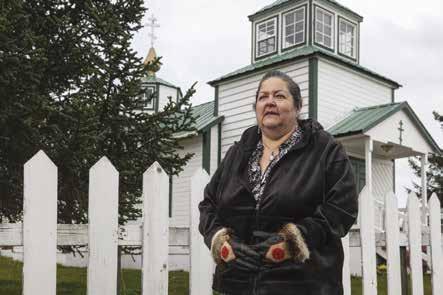
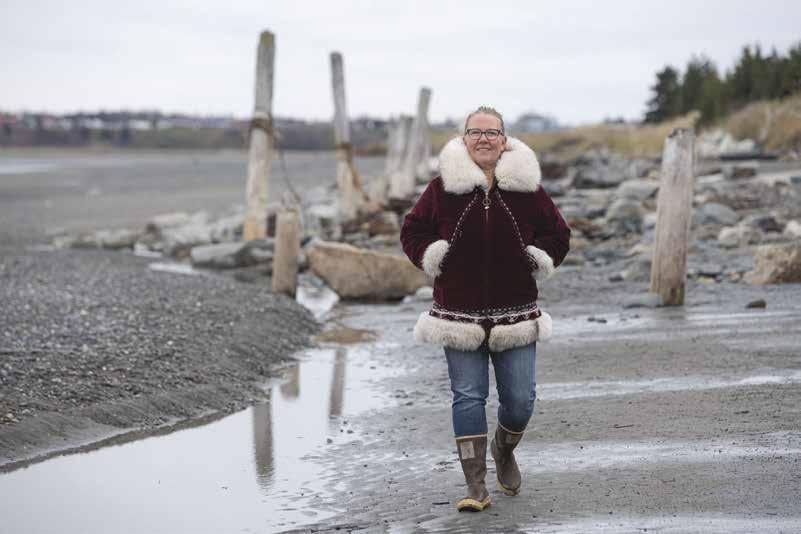

The arm pull game was played to see who was strongest and had the most endurance, and the wrist carry was created to build strength and endurance while carrying heavy loads. “The wrist carry is also a team event with both athletes carrying another athlete on a stick; they have to work together,” says Johnson.
While the strength and endurance games were traditionally only played by men, everyone can take part at NYO.
“Everybody can find a game they can excel in, no matter what their size or weight or age,” says Johnson. “They are really just competing to have fun. The biggest attraction of the games is that it creates a unique sense of community and family; everyone is

Learn why CIRI stakeholders thrive at ciri.com 40 | January 2023 Alaska Business www.akbizmag.com
The Eskimo stick pull is an event that simulates pulling a seal out of the water.
According to the NYO website, the games are about achieving a personal best more than beating the competition; they are the only sporting event in the world where competing athletes help each other to be successful in the games and in life.
“It is nothing like Western sports— there’s no yelling and screaming, and it’s not overly competitive,” Johnson says. “Everyone there cheers for everyone else, just like in any traditional Native sports competition. To survive in the past, everyone had to work together, and we want to pass on that sense of community and sportsmanship in these games.”
While many communities hold smaller events throughout the year, the statewide events for both junior and senior athletes are held in Anchorage each year.
“The Kenaitze Indian tribe, for example, has an annual event in Kenai or Soldotna; Homer has an annual event, as does the Chickaloon tribe,” says Johnson. “The Sealaska Heritage Institute hosts an event in April, and
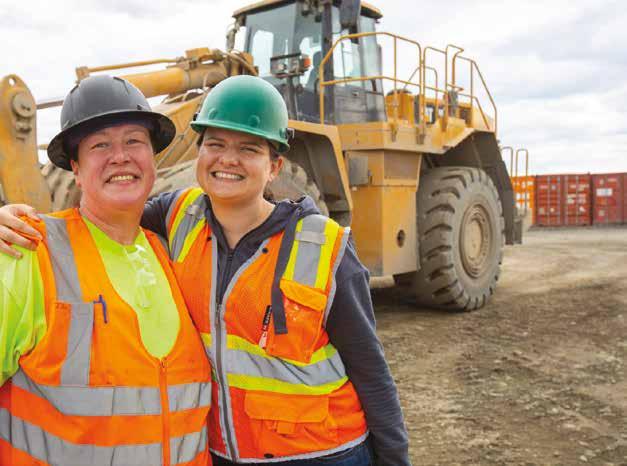
some of these groups may use these events to determine who they will bring to the state event.”
At the state competition, three boys and three girls per age group are allowed to compete at the junior level for each region, community, or tribe, and they are allowed to bring one male and one female competitor to the senior level event.
The junior events take place over three days, with a separate age group participating each day. The senior level events are not divided into age groups.
“The senior events are based on nature; nature doesn’t live by age groups or weight groups,” says Johnson.
While every athlete likes to win, Johnson says that the focus of NYO is to have fun.
“A handful of athletes may believe that the main goal is to get a gold medal, but on their way there, they’re still learning sportsmanship skills,” says Johnson. “And coaches and officials will ask them, ‘Why do we play?’
“It’s a gentle reminder that we’re all here to have fun, compete, and do our best, and that bad sportsmanship
“Why Do We Play?”
“Everybody can find a game they can excel in, no matter what their size or weight or age…
The biggest attraction of the games is that it creates a unique sense of community and family; everyone is there to support each other and to do their best.”
our
Our Iñupiaq values of hard work, cooperation and commitment guide the way we do business every day. nana.com | www.akbizmag.com Alaska Business January 2023 | 41
Nicole Johnson, Head Official and Ambassador NYO Games Honoring
past. Working for our future.
is not allowed,” she adds. “Good sportsmanship is encouraged, and that act carries through to adulthood.”
Corporate and Community Support
Native Youth Olympics are funded completely through sponsorships and donations, with no funding provided by any state or federal agency. For this reason, many Alaska businesses have stepped up to help fund the program, which not only benefits the athletes but the businesses themselves.
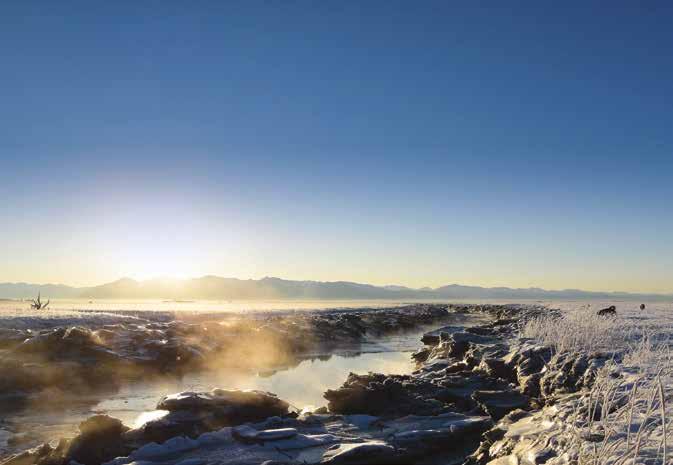

“Many companies like being affiliated with such an important and cherished tradition; it’s a big thing for our community,” says Kelly Hurd, senior director of development at Cook Inlet Tribal Council. “It’s a huge convening that I liken to a mini-AFN [Alaska Federation of Natives convention]. More than 5,000 spectators from more than 100 communities across the state came to our last event.”
Not only does this provide major recognition for sponsors, which include GCI, ConocoPhillips Alaska, First National Bank of Alaska, Alaska Native
in the two-foot
Inlet Tribal Council 907.276.5152 lbblawyers.com VISIT OUR ANCSA RESOURCE CENTER ancsa.lbblawyers.com RISE ABOVE For over four decades Landye Bennett Blumstein has represented Alaska Native organizations, corporations and tribes in every region of Alaska. Our work includes general counsel, business law, land management, resource development, fisheries, business acquisitions, compliance, tax, real estate and government contracting. 42 | January 2023 Alaska Business www.akbizmag.com
An athlete participates
high kick while others provide encouragement. Cook
Tribal Health Consortium, Southcentral Foundation, Cook Inlet Region, Inc. and more, but it also enables them to extend their reach into rural communities.
“Having your name affiliated with NYO has a deep impact in our communities, because you’re recognized as making them a safer and healthier place to be,” says Hurd. “You are also uplifting Alaska Native culture and promoting tradition and diversity.”
As the host of NYO, CITC raises about $250,000 each year to fund its programs. The money is used both for hosting the junior and senior games and for training in communities.

“Nicole Johnson is such an amazing ambassador for NYO,” says Hurd. “She does a lot of that work, going out to schools throughout the state and educating them about the games. She provides a lot of instruction to new teachers and coaches about how the games are performed, which is so important to recruiting new members to the NYO community and keeping these traditions alive and vibrant.”
Companies can come in at different levels of sponsorship, and because it is
a cultural event, contributors can also benefit from an educational tax credit.
“Many of our sponsors have been loyal supporters for years; it’s an event they truly believe in,” says Hurd. “They also recognize that NYO is a training ground for tomorrow’s leaders—it’s a great way to invest in young people, lift them up, and help form tomorrow’s workforce by giving them these opportunities to succeed.”
In addition to sponsorship perks, those who help support NYO also get “Kids come from different parts of the state and learn all about the resources available to keep them healthy, as well as workforce, school, and military opportunities,” says Hurd. “It is also an amazing opportunity for youth to come together from all corners of the state to build partnerships and friendships. It’s something they look forward to each year; it’s the highlight of their academic year.”
Healthier Lifestyles
Unlike most sporting events, NYO follows up with participants to validate its high-minded aims. A survey each
“Many companies like being affiliated with such an important and cherished tradition; it’s a big thing for our community… More than 5,000 spectators from more than 100 communities across the state came to our last event.”
OUR SHAREHOLDERS. OUR HEARTBEAT. CHUGACH.COM www.akbizmag.com Alaska Business January 2023 | 43
Kelly Hurd, Senior Director of Development Cook Inlet Tribal Council
year measures the impact that being involved with NYO has on Alaska’s Native youth and communities.
“We get back really compelling statistics,” says Hurd. “NYO helps students stay in school and helps them create connections with coaches and other students. They are living healthier lifestyles.”
Statistics show that NYO influences young people to improve academic performance, strengthens their overall health and well-being, and instills important values, including leadership and respect. According to the most recent survey, 206 participating athletes reduced substance use, and 85 percent saw themselves as role models for other NYO athletes. Approximately
93 percent learned about Alaska Native cultures and values, and 74 percent kept better grades in school in order to participate.
“We want to thank our partners for their support over the years; we couldn’t do the games without them,” says Hurd. “We appreciate that these businesses— as well as the many individual donors who participate—are making an investment in our community. They are uplifting our kids.”
This year’s junior NYO games will take place from February 24-26, 2023 at a site not yet determined at press time. The senior NYO games will take place on April 20-22, 2023 at the Alaska Airlines Center at UAA. All games are free and open to the public.

“People who are not familiar with traditions of Alaska Native culture will learn a lot about why we play these games, where they came from, and what they promote,” says Johnson. “People outside of our culture who come to watch are always amazed at how everyone helps each other. There’s a sense of camaraderie that athletes have with each other on the floor.”
That camaraderie earned the NYO Games a spot in the Alaska Sports Hall of Fame in 2016.

“Every year, someone comes up to me and says they’ve never seen such a thing in their life,” Johnson adds. “I’ve been told that Western sports could learn a few things from this.”
 Eden Hopson, winner of the 2022 girls’ one-foot high kick, goes for her winning kick.
Cook Inlet Tribal Council
Coaches and team members cheer the athletes during the 2022 seal hop event.
Cook Inlet Tribal Council
Eden Hopson hugs her coach and mom, Joanna Hopson, after landing her winning one-foot high kick.
Eden Hopson, winner of the 2022 girls’ one-foot high kick, goes for her winning kick.
Cook Inlet Tribal Council
Coaches and team members cheer the athletes during the 2022 seal hop event.
Cook Inlet Tribal Council
Eden Hopson hugs her coach and mom, Joanna Hopson, after landing her winning one-foot high kick.
44 | January 2023 Alaska Business www.akbizmag.com
Cook Inlet Tribal Council
Since 1984, CEI has continued to employ cutting-edge techniques while maintaining the high quality of workmanship, compliance and safety our clients have come to expect.

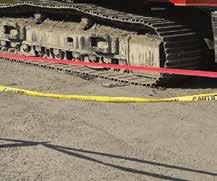



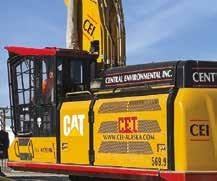





cei-alaska.com
Anchorage 229 E. Whitney Rd. #200 cei@cei-alaska.com (907) 561-0125
Fairbanks 1301 Well St. ray@cei x.com (907) 456-1153

Safe, cost-e ective solutions for the most challenging projects.
Need a Job Done?
UTILITIES
ENVIRONMENTAL DEMOLITION CONSTRUCTION
Kivalina Landfill
The village of Kivalina, northwest of Kotzebue, was already in grave danger. The barrier island on which it sits (bottom right) is forecast to be underwater before this decade is over. Then the remnants of Typhoon Merbok struck the Western Alaska coast in mid-September, scattering debris around the area (bottom left).

Luckily, Kivalina was prepared. Work had begun earlier in the summer on rehabilitation of the village landfill, led by Delta Backhaul Co. “Due to the recent landfill cover and newly fenced-in waste collection area,” says company owner Doug Huntman, “environmental damage was kept to a minimum.”
Delta Backhaul, aided by local laborers, tidied up the 6.7-acre site, closing the majority of the old landfill through consolidation, compaction, and cover and developing a more manageable 1-acre site. All the better for Kivalina’s eventual relocation, whenever that massive effort takes place.
“This project will serve as a model for future landfill clean-up projects in rural Alaska,” Huntman says.
The Alaska Department of Environmental Conservation (DEC) inspected the Kivalina landfill in 2018, resulting in a poor score of 14 percent. That report helped prioritize efforts to rehabilitate the landfill.


46 | January 2023 Alaska Business www.akbizmag.com CONSTRUCTION

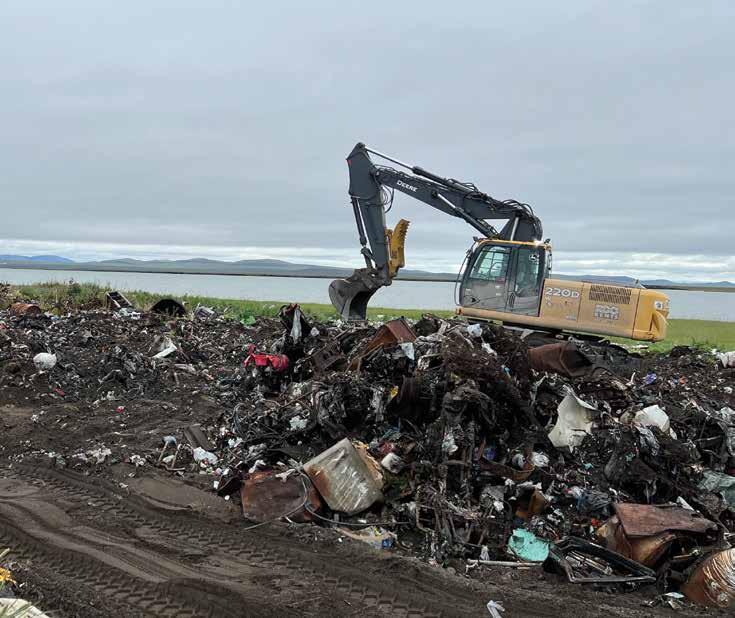
www.akbizmag.com Alaska Business January 2023 | 47
The most basic part of the rehab was a litter patrol. Sam Huntman, Zach Huntman, Robert Swan, Brett Norton, Brian Adams, and Kirk Koenig helped clean up the perimeter (top left). By the end of the project, more than 500 tons of trash was removed from the old site.
A honey bucket trench has been established for village residents to dump their sewage (middle left). “The improvements at the current site will greatly reduce the impacts from solid waste in Kivalina, protecting clean drinking water and substance resources,” Huntman says. The rehab also set up a staging area for electronics waste, which can be backhauled to a recycler (middle right).
More than forty years’ worth of accumulated garbage was packed into 5-cubic-yard super sacks and staged on the beach (bottom left) Due to funding shortfalls, the sacks are stuck for the winter until they can be shipped to Seattle in the spring for final disposal and a regulated landfill.
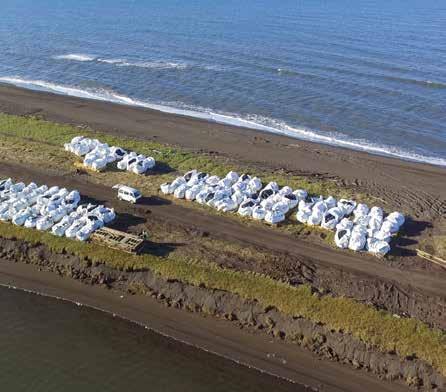
An unofficial inspection at the conclusion of the rehab improved the score to 60 percent. Huntman says
Delta Backhaul is working with DEC’s solid waste program to permit the current site and bring the score up to 70 percent.


Kivalina’s new landfill has more than 800 linear feet of 60-foot fence, which Darin Hanley, Reid Casey, Sam Huntman, and Zach Huntman helped install (far right).

48 | January 2023 Alaska Business www.akbizmag.com

www.akbizmag.com Alaska Business January 2023 | 49
Zach Huntman and Darin Hanley measure out fencing material for the installation of the fence (top and bottom left, far right) which is topped with barbed wire and is complete with a locking gate and landfill entrance signs.

As part of the project, Kivalina purchased a John Deere 544K wheel loader, which will be kept in the city garage for use by the landfill crew. Also, Summit Consulting Services of Anchorage is fabricating two 7-cubic-yard burn boxes, which will incinerate some trash and reduce its volume, extending the useful life of the landfill. That hardware is set to be delivered on the first barge of the spring.
While the relocation of Kivalina to higher ground is on hold, the village does have an evacuation road to escape the worst coastal storms. Once a new class III landfill has been established along the evacuation road, the current site will be fully closed out. Huntman explains that it will be covered with an additional 2 feet of dirt, re-graded to prevent ponding and erosion, and then seeded with vegetation, as if it were never there.
All of the photos and information were generously provided (and taken) by Doug Huntman, owner of Delta Backhaul Co., a solid waste consultant organization focused on solid waste improvement projects and household hazardous waste backhaul programs for rural Alaska (dbcalaska.net).

50 | January 2023 Alaska Business www.akbizmag.com

www.akbizmag.com Alaska Business January 2023 | 51
Industrial Support Services
Industrial Support Services
Behind the curtain of Alaska’s superstar industries, a crew of peripheral businesses keeps the whole show moving. These industrial support services are specialists in their niche, satisfying operational needs that no single company can manage on its own.
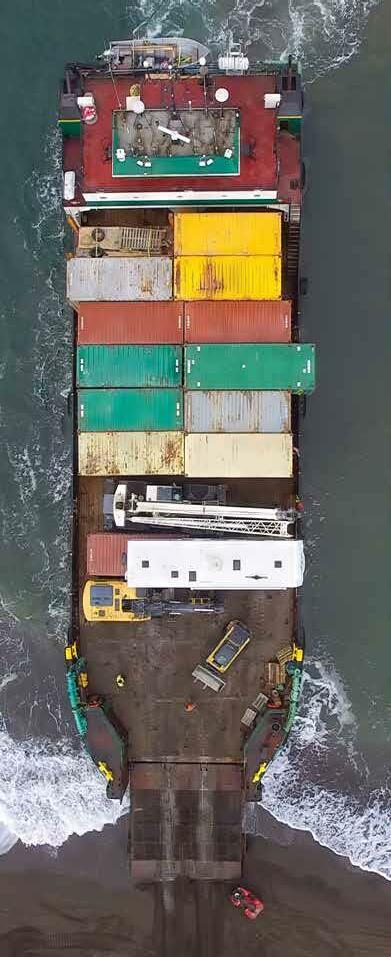
Of these supporting players, several equipment dealers have found an advantageous spot at the crossroads of high revenue and local ownership. Construction Machinery Industrial, Airport Equipment Rentals, and Craig Taylor Equipment all rank alongside their major building contractor clients among the Top 49ers (Alaska companies ranked by gross revenue).
“Equipment Rentals” visits some of their peers, unfolding a map of how to succeed in equipment rental.
52 | January 2023 Alaska Business www.akbizmag.com
SUPPORT SERVICES
INDUSTRIAL
Doug Huntman Delta Backhaul Co
Every industry can benefit from professional insight, whether in the form of economic consulting or communications. “Clarity from Confusion” reports on Alaska’s biggest private research firms, while guest author Sarah Erkmann Ward of Blueprint Alaska shares her expertise with connecting to the public, particularly for resource development projects.





Other industries may live in the spotlight, but (to extend the metaphor) they would be in the dark without a stagehand to light the way.


907-561-8922 www.greatoriginals.com 360 E. International Airport Road Anchorage, Alaska Customer Service Hours: 9am - 5pm, Monday - Friday Produ ction Ho urs: Till the work is done, as we promised! If it requires printing of any type, quick & reliable local production, email us for an quick Estimate at greatos@alaskan.com. www.akbizmag.com Alaska Business January 2023 | 53 INDUSTRIAL SUPPORT SERVICES
Have Warehouses Gone?”
Industries need room to work and to store materials and inventory, and that’s the job of warehouse support businesses. It’s not as easy as rolling up the door on a big empty shed, as shown in “Where Oh Where
Equipment Rentals
A temporary toolbox has the right equipment at the right time
By Rachael Kvapil
Charles Klever, president of Yukon Equipment, Inc., says his company regularly rents a variety of heavy construction vehicles, including dozers, loaders, backhoes, sweepers, compaction rollers, and more. However, Yukon Equipment has recently seen a rise in the demand for excavators at all three of their locations in Anchorage, Fairbanks, and Wasilla. The main inventory of full-size excavators runs from 29,000 pounds to 55,000 pounds and comes with steel and rubber tracks. Several have front blades, and almost all come equipped with multiple buckets and hydraulic thumbs.
Although many envision long lines of cranes and backhoes aligned in an otherwise empty lot, heavy construction vehicles are only one type of equipment rental. Nick Ferree, Vice President of Equipment Source, Inc. (ESI) says compact construction equipment and smaller equipment like heaters, generators, and snowblowers also make up a significant portion of equipment rentals. Compact construction equipment allows crews to accomplish many of the same tasks but on a smaller scale. He says the type of rental equipment is often seasonal.
"In the spring and summer, contractors and homeowners rent more earth movers to work on dirt work and landscaping," says Ferree. "In the fall and winter, contractors who are enclosing buildings and finishing the inside will rent heaters to keep

lucato | iStoock 54 | January 2023 Alaska Business www.akbizmag.com INDUSTRIAL SUPPORT SERVICES
their workspace warm. Snow removal equipment is also more in demand."

Klever says management of the rental fleet requires constant review of equipment usage and calculation of return on assets. This analysis includes finding the right mix of rental inventory of updated equipment and keeping a constant schedule of rentals moving in and out the door.
"Choices pertaining to the length of rental, whether daily, weekly, or monthly—plus ensuring you have equipment for your regular customers— is essential to keeping renters coming back," says Klever.


Once customers schedule a rental, they have to get the equipment to their worksite. Hand-held construction tools, heaters, generators, and snowblowers can fit in a utility vehicle or on a small trailer. However, larger equipment or bulk rentals require more complicated logistics. Ferree says ESI rents trailers to customers who want to haul compact construction equipment. ESI also frequently delivers equipment or arranges for the delivery of equipment through a third-party service.
Keep Things Running
The rental department does not work in a silo. The final piece happens behind the scenes after the rental equipment has been returned. Ensuring rental equipment functions properly for the next person requires a service and maintenance team to inspect the machinery each time it's returned, repair any damage, and replace parts and fluids as needed. Without service and maintenance, Klever says equipment rentals wouldn't be possible.
"Service department maintenance, from our factory-trained techs, is a vital function of the overall rental operation," says Klever.

Ferree says the amount of maintenance required for rental equipment often depends on the age of the rental fleet. Older fleets can become labor intensive versus fleets that are replaced more often. Even then, rental equipment logs more run-time than owned equipment that might not be used every day. Of all the departments, the service department is often one of the busiest, as it is finalizing equipment ordered through the sales department

"Weekend warriors won't run a machine every day… Neither will a construction company that only works in the summer. There are many reasons why people prefer to rent over buy."
Nick Ferree, Vice President, Equipment Source, Inc.
www.MTHousing.net office@MTHousing.net 907-952-2067 877-929-9902 Innovative, cost effective housing with all the comforts of home • Arctic tough • Turn-key set up • Rapid mobilization • Custom built • Easy to relocate Air Systems Deliver Fresh Air to Each Room! Let us build your next modular facility www.akbizmag.com Alaska Business January 2023 | 55 INDUSTRIAL SUPPORT SERVICES
in addition to performing warranty repairs and regular maintenance on customer equipment purchased in previous years.

"We have a dozen service technicians between Anchorage and Fairbanks cleaning and maintaining hundreds of pieces," says Ferree.

One way to reduce wear and tear on rental equipment is to ensure the customer chooses the right tool for the job. Klever says a savvy rental manager carefully selects the equipment available in the fleet and makes sure his team understands its purpose and how to use it. Likewise, it's also advantageous to rent to repeat customers with a track record of returning equipment in good shape.
Generally, special certifications are not required to rent equipment, but Ferree says insurance is a must. The contractor generally carries insurance for heavy equipment, like a 50,000-pound excavator. Smaller equipment can sometimes be covered by a homeowner's policy, and ESI sells insurance policies that cover the equipment being rented.

"We try to do some screening when we meet the client," says Ferree. "We don't necessarily rent equipment based on specific criteria, but if we are not comfortable renting the equipment to someone, we will turn them away. This includes not having the right trailer to haul something. If we're not sure it's safe, it's better to turn away a customer in that situation than destroy the equipment or someone gets hurt."
Rent vs. Buy
Rentals make up 10 percent of ESI's annual revenue and 15 percent to 20 percent of Yukon Equipment's. Providing equipment rentals is labor intensive from a maintenance perspective and logistically challenging for remote clients, yet both companies offer this option because it is beneficial to the customer. Ferree explains that there are many reasons why customers choose to rent versus buy equipment. The most obvious is that owning compact and heavy equipment is outside of many people's budgets. The starting cost of compact equipment is about the same as a high-end
passenger vehicle, but the
Rentals can either serve as the main equipment used by a builder or as a supplement to an existing fleet that they already own.
Yukon Equipment Inc.
Companies like Yukon Equipment Inc. offer rent-to-buy programs for users who determine they would like to purchase a machine they’ve rented several times.
Yukon Equipment Inc.
Rental departments make sure the right machinery is available to the customer at the right time and at the proper location. The service department handles maintenance of the machine when it returns, making sure any damage is fixed and all the parts are functioning properly.
56 | January 2023 Alaska Business www.akbizmag.com
SUPPORT SERVICES
Yukon Equipment Inc.
INDUSTRIAL
Construction of Span Alaska’s new Fairbanks Service Center (FSC) is underway, but it is breaking ground in more ways than one. Our FSC will be one of the most technologically modern, efficient, and purpose-driven transportation facilities ever built in Fairbanks.
Coming in the summer of 2023, Span’s FSC will increase our capacity, improve security, offer customizable storage areas, and streamline freight handling — all to ensure faster, smoother, and more consistent delivery of your product to its final destination.



To schedule a pickup or find the Span location nearest you, call 1-800-257-7726 or visit us at spanalaska.com.















Serving Alaska since 1978






























costs quickly escalate if additional attachments or features are also purchased. Heavy equipment often costs more than the average home. Besides the initial cost, there are other factors to consider, such as storage and maintenance. And even if a potential customer can afford a machine, has a place to store it, and can arrange for regular maintenance, they may not have the need for regular access to these types of machines.
"Weekend warriors won't run a machine every day," says Ferree. "Neither will a construction company that only works in the summer. There are many reasons why people prefer to rent over buy."
He adds that some companies simply have separate budgets for renting and buying equipment and choose not to reallocate funds. Most of the time, he finds that customers have a sense of ease with rental equipment. Continual use and extreme weather can cause equipment to occasionally
break down, so rental customers like the fact that they can call the company and swap it out.
In many cases, long-time renters eventually purchase equipment they use most frequently. Klever says his company has developed a rent-toown process to help make ownership more achievable. Yukon Equipment can apply most or all of a customer's rental payments toward a purchase. This arrangement usually happens with a customer who rents the same machine for a couple of months and then decides to buy it. Klever says Yukon Equipment is unique in this regard, as he knows many dealers do not offer this option. In most cases, dealers keep rental fleet machines as rentals until the time for disposal. At Yukon Equipment, they regularly sell from their rental fleet and replace the units when possible.
"Having the sales staff work with the rental department can help people who are eventually looking to buy
a piece of machinery," says Klever. "It's important to develop a solid relationship with the dealership, so I suggest walking the equipment yard and looking at the different options before you make a decision."

Ferree says it's important to contact a rental department long before the start of a project, especially for a firsttime contractor. Though many people have a good idea of what equipment they need, it is still important to discuss options. Klever agrees that setting up an account as far in advance as possible is a must. He says last-minute rentals can be difficult because of the limited number of machines available. He says the mistake most people make is calling around even after finding an available machine.
"If it's available, I would schedule a rental," says Klever. "It's not worth calling around to try and save a small amount of money. It's more important to have the equipment you need for the required job."
Yukon Equipment has seen a rise in the demand for excavators at all three of its Alaska locations, where its stock of full-size excavators ranges from 29,000 to 55,000 pounds.
58 | January 2023 Alaska Business www.akbizmag.com INDUSTRIAL SUPPORT SERVICES
Yukon Equipment Inc.
Where Oh Where Have Warehouses Gone?
Creative uses of industrial storage space
By Scott Rhode
arehouses are easy to ignore. Almost by definition, they are places that the general public passes by but rarely visits.
“Most of the time you don’t allow the public inside because of the safety requirements,” says Rosita Johnson, business development manager for Advanced Supply Chain International (ASCI) in Anchorage. The company manages inventory contained inside buildings stacked to the roof with pallets, forklifts scooting to and fro.
A warehouse is defined less by its form than by function. “It doesn’t have anything to do with what the building looks like; it is what the zoning allows you to do in that building,” explains Elisha Martin, a real estate broker with Colliers International. While many warehouses have large roll-up doors, some don’t. Most are designed around access for delivery trucks, and as a rule they are places where only people who work there ever see the inside.
Commercial property spans retail, office, and various industrial uses, of which warehousing is just one. A warehouse might contain a manufacturer or, as the name suggests, wares being stocked for retail distribution. They store materials and equipment.
“In the last year, we’ve worked with a company that does fittings and hoses, electrical parts, airplane parts, medical supplies, core samples,” Martin says. “It always goes back to what’s in the zoning and what’s allowed in those buildings and what’s not allowed in other areas.”
Lately, users have had to accept less than suitable spaces. A relative scarcity of warehouses in Alaska demands some clever solutions.

Tricks of the Trade
Maximizing bare minimum warehouse space has been ASCI’s specialty since 1999. The company provides fullservice supply chain management support, overseeing more than $300 million worth of inventory annually. At any given time, the company tracks more than 100,000 individual SKUs (stock keeping units); Johnson says a typical warehouse holds about 14,000 SKUs.
End-to-end management allows for more flexibility, she says, by minimizing conflicts with multiple contractors. This efficiency enables ASCI to save clients money, which the company estimates at more than $606 million in reduced costs over the last five years.
W
ASCI 60 | January 2023 Alaska Business www.akbizmag.com INDUSTRIAL SUPPORT SERVICES
One of the tricks, says Johnson, is consolidating inventory bound for the North Slope in Anchorage first. “Even though you’d think that’s an extra step, slow down the shipments—in the end, if you have an inaccurate or damaged item that gets to the North Slope, it’s a lot more expensive to handle it when it’s on the North Slope. If you catch this in Anchorage, it becomes a cost avoidance,” she explains.
ASCI also helps clients reduce the amount of inventory that must be warehoused in the first place. Johnson points to an analysis ASCI did for BP. “They had a lot of what we call ‘dead inventory.’ Some of them were critical spares—you have to be careful not to get rid of those—but some of those items were no longer functional, so when you optimize inventory levels, what happens is you free up warehouse space,” she explains. As a result, ASCI shrank BP’s storage footprint. Fewer facilities means lower overhead, with fewer personnel required to maintain them.
ASCI’s experience on the North Slope taught managers lessons that might not be obvious. “Certain items you can’t store outside,” Johnson says, and that includes ordinary office paper. The company learned that certain thicknesses of paper would become rigid if stored in conditions that are too cold and dry.
Adding more tools to its kit, last summer ASCI became the Alaska affiliate of American Chain of Warehouses, Inc., a national nonprofit that matches companies with logistics and warehouse providers. With membership comes access to the latest warehouse management technologies and market research.

The information exchange goes both ways, according to Johnson. “So far, a lot of companies from the Lower 48 have been reaching out to us,” she says, “because if you function in Alaska… it shows we can pretty much run warehouse operations anywhere.”
Space Squeeze
One obstacle that warehouse operations are dealing with in Alaska is a shortage of warehouse space.
“Warehouse is the tightest commercial property we have in Alaska,” says Martin. “There’s approximately 12 www.akbizmag.com

Alaska Business January 2023 | 61 INDUSTRIAL SUPPORT SERVICES
to 13 million square feet of [industrial] property in Anchorage, and we are at a vacancy of between 2 and 3 percent. That is below the national average for property availability.” According to Colliers, the average rate nationwide is 3.7 percent vacant.
Other types of commercial space are plentiful, especially in Anchorage. “If you wanted to tour 20,000 square feet of office space, I could give you eight opportunities, if not more, and that would be after narrowing it down, probably,” Martin says. “I think there’s 200-plus listings for office space right now just in this Midtown area.”
Smaller warehouses are in particularly short supply. “If you’re looking for a warehouse that’s maybe 2,000 square feet or 4,000 square feet, they’re very hard to come by because larger users have taken those spaces and combined them,” Martin says. “The client that needs, like, 1,500 square feet, I have to simply call around to other brokers in town that I know have properties in that range and see if anybody is coming up [for sale soon] or not paying the rent.”

The reason for the warehouse shortage, in Anchorage at least, is the same that limits residential growth: not enough land. Wedged between the ocean and the mountains and with military reserve occupying much of the Municipality, the remaining industrial land in the Anchorage Bowl is difficult to develop. “If it is developable, it is expensive,” Martin explains. “You’d be talking about probably $14 to $18 per square foot to be able to purchase the land.” Add to that the extraordinarily high cost of construction. Consequently, not much new warehouse space has been built. Martin estimates about 1 million square feet in the last five years, which is not a lot for a market Anchorage’s size.
And warehouses want to be in Anchorage. “It is very much location based,” Martin says. “The proximity to the airport and to the port are usually logistically things that are very important to clients when they’re either moving in the market or moving within the market.”
Another reason for the shortage of space is the recent supply chain
“So far, a lot of companies from the Lower 48 have been reaching out to us because if you function in Alaska… it shows we can pretty much run warehouse operations anywhere.”
Setting a higher, more human, consulting standard – because Alaskans deserve custom technology solutions that meet their unique needs. Alaskans & Technology ampersandtech.com | 907.792.4600 (Anchorage) | 907.459.4900 (Fairbanks) 62 | January 2023 Alaska Business www.akbizmag.com INDUSTRIAL SUPPORT SERVICES
Rosita Johnson Business Development Manager Advanced Supply Chain International
disruptions. Before a couple years ago, manufacturers streamlined operations to minimize the amount of goods sitting in warehouses. “We’ve always had this balance between just-in-time and keeping product on hand,” says Alyssa Rodrigues, director of Alaska Manufacturing Extension Partnership (Alaska MEP), a program of the National Institute of Standards and Technology hosted by UAA.
Supply chain disruptions tilted the calculation in favor of having more wares stocked up, filling every inch of available storage space.


A feedback loop adds to the problem. Scarcity raises rent prices, which in turn discourages new construction. “The rent would need to be between $19 to $21 per square foot annually,” Martin explains. “This won’t pencil out for most businesses. The business will likely take a less desirable warehouse to fit the financial business model.”
Lack of warehouse space constrains business opportunities. Rodrigues gives the example of a manufacturer that gets a huge order but doesn’t have enough material
ASCI specializes in inventory management on the North Slope for oil and gas companies and their support contractors.
www.akbizmag.com Alaska Business January 2023 | 63 INDUSTRIAL SUPPORT SERVICES
ASCI
on hand. “If I don’t have my inputs, then I can’t either make that sale or deliver that sale—which in many cases is worse than not taking the sale to begin with,” she says. Rodrigues adds that she’s seen this problem arise many times.






Creative Solutions
Apart from waiting for an economic boom to change the bottom-line calculation, warehouse users do have options to escape the scarcity trap.


Pooling resources, for starters. Johnson saw an example in October at Alaska MEP’s Kenai Peninsula Manufacturing Roadshow. “There were two manufacturers sitting next to each other. One makes tea and another one sells cheeses and some other Alaska-made goods,” she recalls. “They have to share warehouse space, and they have to figure out who is responsible for certain safety regulations or requirements.”
Alaska MEP is working with companies to find opportunities for consolidation. “Say there’s three that need to buy organic oats,” Rodrigues
By optimizing the amount of inventory for clients, ASCI can reduce the number of workers needed to manage it, lowering overhead costs. ASCI STEP INTO ALASKA’S FUTURE WITH UAF eCAMPUS UAF is an AA/EO employer and educational institution and prohibits illegal discrimination against any individual. eCampus Encourage your employees to complete their degree or certification online! Prepare your business for Alaska’s future! UAF eCampus Business Partnerships offer discounts. tathompson2@alaska.edu 907.455.2090 ecampus.uaf.edu Contact Teresa Thompson to get started: 64 | January 2023 Alaska Business www.akbizmag.com INDUSTRIAL SUPPORT SERVICES
says. “They can place those orders together, have them shipped and warehoused all together, and hopefully save some money.”
Or, instead of compatible roommates, warehouse users can break up their space. Johnson points to a local maker of dehydrated foods. “They have three small storage facilities within the same small area,” she says. “Eventually they do want to have a bigger building, but it’s just not as easy.”
Another strategy is converting buildings that were originally used for something else. Martin suggests the now-vacant Northway Mall in Anchorage. “Malls are less and less attractive for retail clients, and there’s been a lot of conversion of malls into other uses,” she says. Clients who’ve been looking for space for a long time might resort to conversion of sub-optimal buildings. “Ceiling height, loading dock doors, and things like that—but those obstacles can be overcome,” Martin says.
In Anchorage, the former Toys “R” Us store is now a distribution center for the Costco next door. Not far
away, up Dimond Boulevard, the former Sam’s Club store is now an outlet for Alaska Industrial Hardware, which uses the vast floor space for additional storage.
The Matanuska-Susitna Borough, having more buildable land, is an alternative for businesses not tied to Anchorage’s logistics hubs. The MatSu Borough has its own logistics hub at Port Mackenzie, too, yet Martin doesn’t see that area as a complete replacement. “That doesn’t put them in proximity to distribute to the rest of Alaska. Some of the tenants that are here are distributing to local vendors that are in Anchorage also, and that would be their major area. If they are distributing throughout all of Alaska, they may have a location here in Anchorage and one in Fairbanks, but not likely they would have one in the Mat-Su,” she says.
In her view, the most practical solution is the creative use of existing space. Martin points to one client looking for 14,000 square feet that settled, after a year and a half, on a building that requires a $300,000
sprinkler system upgrade. “It really becomes more scouring the market for an underused building. Usually the
Good People Working Together
I could tell you more about how I feel about Alaska Business and what it has to offer—or you can hear it from our clients:
By Janis Plume Senior Account Manager
Every few months, I’m asked to write a short article about advertising strategies, including the print and digital products offered by Alaska Business.
I sometimes mention our one-onone service and how we build strong relationships. I genuinely believe the best service and advice come from frank discussions with clients over time.

“Alaska Business has market seniority and expertise and provides an excellent quality of service. The frequency of publications and diversity of highlights offers a unique value to advertising clients and, quite frankly, keep Alaskan readers ‘in the know.’ My experience working with you has been fun! You are generous with your time and able to examine the varying advertising needs for Great Northwest and have offered your honest, candid feedback during our discussions. I couldn’t ask for more and look forward to many more years working together!”
Bobbie McCarter, Great Northwest, Inc.

“It is always a pleasure working with Janis at Alaska Business magazine and
The Alaska Contractor magazine. His knowledge of the products he offers and a firm understanding of Alaska’s unique business sectors make him a reliable and trustworthy partner in planning advertising campaigns. I have confidence in his recommendations, and he is a valuable partner in planning my Alaska Business-to-Business marketing mix.”
Dee Buchanon, Subway of Alaska
These generous words are humbling, but the positive results these companies have found stem from good people working together to reach mutually beneficial goals. If a harmonious process and real results resonate with you, please get in touch with me via phone or email.
Janis Plume
907-257-2917
janis@akbizmag.com
Under CEO and co-owner Christine Hopkins, ASCI is now the Alaska affiliate of American Chain of Warehouses, Inc., a nonprofit service-matching organization.
ASCI
–SPONSORED CONTENT–
www.akbizmag.com Alaska Business January 2023 | 65 INDUSTRIAL SUPPORT SERVICES
opportunity comes in somebody’s change in their need: somebody needs to upsize or downsize, which leaves a hole in the market that can be backfilled by someone else,” Martin says.
Moving In
Everything points to the warehouse shortage easing up, according to Johnson. She cites an improvement in space utilization since 2021.
Some disused space is also returning to life. The former JC Penney warehouse on Arctic Boulevard in Midtown Anchorage sold to an outof-state buyer in the last year, but Martin isn’t sure what the plans for the building are. Before it opens, there’s a lot of deferred maintenance. “Those are the types of obstacles we see in a warehouse that’s existing: great bones, great structure, but a lot of other factors,” she says.
She did find a new tenant for the former Sears warehouse at Old Seward Highway and Dowling Road. Time Equities, Inc. bought the building in April 2022 (along with the Midtown Mall
which formerly hosted Anchorage’s Sears store), which has been empty since Sears downsized in 2018. Rather than divide its 88,000 square feet for multiple smaller tenants, “the owner felt like there was going to be an opportunity for a single user, and we have that now,” Martin says. That single user was announced in December: Amazon is turning the warehouse into a sorting facility.
Martin expects Amazon will add to the roughly 4,500 warehouse workers in Anchorage. After sitting empty for five years, putting those 88,000 square feet back to productive use lifts the entire economy.
More broadly, the demand for warehouses by manufacturers and merchants is a sign of growth. “As we see them expand in our market, that’s positive,” Martin says. “To see them needing more space for those products because they’re looking at projects that are coming down the pipeline in the state… Those things are exciting.”

ASCI
In 2022, ASCI was awarded its first federal contract, worth $12.4 million for one year, to provide logistics service support for both military and civilian agencies in Alaska.
“If you’re looking for a warehouse that’s maybe 2,000 square feet or 4,000 square feet, they’re very hard to come by because larger users have taken those spaces and combined them.”
66 | January 2023 Alaska Business www.akbizmag.com INDUSTRIAL SUPPORT SERVICES
Elisha Martin, Broker, Colliers International
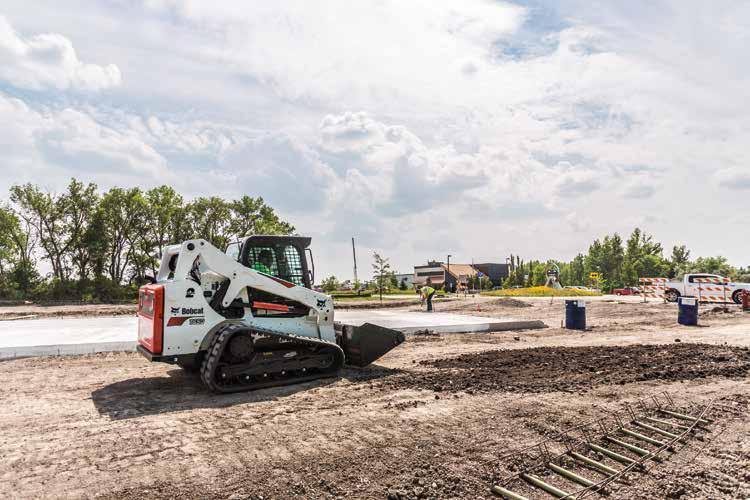
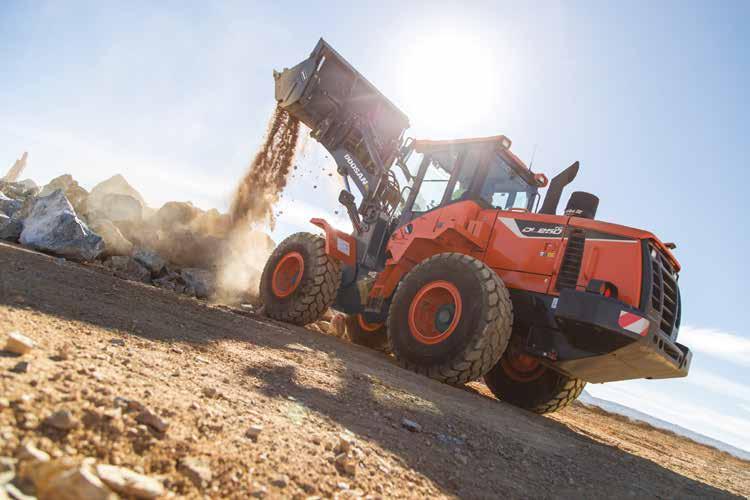


www.CraigTaylorEquipment www.PeterbiltAlaska.com
Connecting with Communities
9 tips for resource development communications
By Sarah Erkmann Ward
Good communication is critical for any business or industry. This is especially true when developing natural resources in Alaska, where nothing is more indicative of a project’s success or failure than the quality of communication with stakeholders.

It’s not an easy task. The list of development projects that enjoyed early success or showed incredible promise only to be relegated to the dustbin of Alaska history is long. Of course, economics ultimately determines if projects move forward. But in many cases, the frequency and tone of communications plays an outsized role, ultimately impacting the economics.
So, what are some best practices, especially at a time when Alaska is poised to benefit from several new, large-scale development projects?
Make a Plan
No one would start building a bridge without first developing a detailed blueprint. The same is true in communications. Project managers should invest the time to draft a solid communications plan before launching messages into the public domain. An effective communications program identifies goals, objectives, strategies, and tactics. Stakeholders must be identified and their concerns addressed.
Like any work product, the best communication plans are detailed, include timelines, and are
Carter Damaska
| Alaska Business
68 | January 2023 Alaska Business www.akbizmag.com
measurable. For large-scale projects, public opinion research is helpful in determining Alaskans’ attitudes about a specific project or proposal. Ideally, the results of that research inform the plan’s development.
Be Accurate

“Resource development is held to a higher standard when it comes to putting out information,” says Kara Moriarty, president and CEO of the Alaska Oil and Gas Association. “Facts should be third-party referenced and sourced to establish credibility. We [oil and gas] don’t enjoy the benefit of the doubt when making claims publicly, so it’s more important to get it right than just get it out the door.”
The need to provide holistic data that seeks to inform is critical. Any effort to put out partially true or out-of-context information will almost always backfire, making the person or organization who said it appear to be playing "hide the ball" or, even worse, untrustworthy. “You must first establish why you’re a credible source of information on a given topic,” says Rebecca Logan, CEO
of The Alaska Support Industry Alliance. “Then, take it a step further and provide information your audience is not getting anywhere else.”
Keep It Local
Alaskans don’t like being told what to do or think by Outsiders. Politicians who weren’t born here must essentially apologize for this fact. Ensuring development projects are “made in Alaska” means companies and organizations should go above and beyond to hire Alaskans and provide benefits to local communities. Once this behavior is established, communicate it early and often.
That’s a reality the team at Donlin Gold has taken seriously since day one. The project maintains a longtime commitment to involving residents in the Yukon-Kuskokwim region. “Having a Community Relations team that grew up in the region helps maintain relationships and give perspective on life in remote communities, as well as how we can continue to be a good partner,” says Kristina Woolston, Donlin Gold’s external affairs manager. “It also

Learn more about how Donlin Gold is protecting land and water at donlingold.com Subsistence and mining aren’t at odds: we know because our employees live them both.
www.akbizmag.com Alaska Business January 2023 | 69 INDUSTRIAL SUPPORT SERVICES
AN ALASKA NATIVE OWNED PROJECT
The key is to emphasize people, not production. Show Alaskans what is in it for them and how communities stand to benefit from development in ways that resonate. Appeal, in an authentic way, to hearts and minds.
helps us build trust in each community and gives them a comfort level in requesting more information.”
Nurture Relationships
Alaska is one big, small town. Relationships are critical to achieving business success, especially when it comes to resource development projects. Ideally, this work begins early in the process. “Communicating early and often about the project and making connections and forming partnerships with the community before the investment even begins is helpful,” says Moriarty. “Relationships should be constantly tended to, not just when hot-button issues come up or there’s a crisis. Efforts to build relationships should be genuine and good for both parties.”
Deantha Skibinski, executive director of the Alaska Miners Association, agrees. “When a project is being proposed in a region, it is important to develop long-term relationships with the communities, residents, persons in authority, and other local people,” she says. “These can become supporters, educators, and advocates if the relationship is nourished and based on mutual respect.”
Make It Personal
Communicating features and benefits of current and potential resource development projects is often challenging because of their technical nature; it can be difficult to communicate dense information in a way that is not only easy to understand but establishes a personal connection.

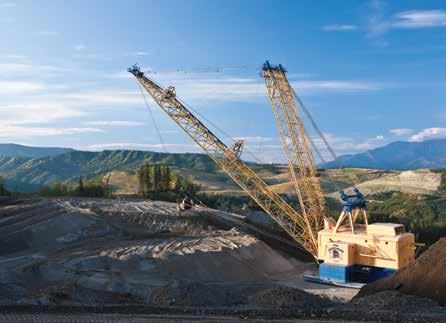
That said, a project’s success requires such communication. It is necessary to connect the dots in a way that links a project’s development with personal gain. Call it the “What’s in for me?” factor.
The best communications in resource development emphasizes people and makes emotional connections. It’s not just the barrels per day going into the pipeline (though that is undoubtedly welcome news) but regular Alaskans who are able to live and work in the state because of the investments being made by oil and gas and mining companies. It is the employee who can work two
 Model success. By taking care of the Interior, Usibelli Coal Mine presents a positive image through its everyday actions.
Usibelli Coal Mine
Model success. By taking care of the Interior, Usibelli Coal Mine presents a positive image through its everyday actions.
Usibelli Coal Mine
| Alaska Business 70 | January 2023 Alaska Business www.akbizmag.com INDUSTRIAL SUPPORT SERVICES
Show, don’t tell. Donlin Gold invited the press to its remote work camp this summer to witness the mine development for themselves. Carter Damaska
weeks on at the Donlin project and then return to their rural community and subsistence hunt during their two weeks off. The key is to emphasize people, not production. Show Alaskans what is in it for them and how communities stand to benefit from development in ways that resonate. Appeal, in an authentic way, to hearts and minds.


Be Present


Professionals working in resource development must be prepared to listen. Really listen, not just gather information and then do what they were going to do anyway. “No amount of money put toward any sort of campaign can take the place of interpersonal communications when it comes to a project proposal,” says Skibinski. “Sit with the stakeholders and discuss thoroughly and transparently what you aim to do. A conversation that is thorough, honest, and patient is necessary.”
Woolston seconds this approach. “It starts with solid communication and willingness to have honest discussions about the project,” says Woolston. “We frequently offer updates to our stakeholders in the Y-K region. Sometimes they take us up on that offer and sometimes they don’t. But when we do receive requests for project information, we always provide it.”
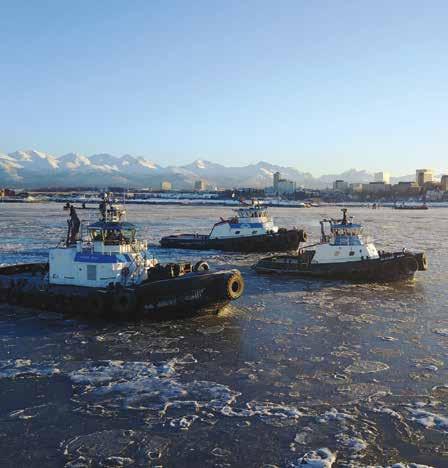

Wholesale Construction & Specialty Materials Village Trail Mats Rig Mats Crane Mats Access Mats Composite Mats CLT Mats Camp Mats Boardwalks - Trails Pressure Treating Lumber and Panels Timbers & Piling Timber Fabrication Rigid Foam - SIPS Helical Piers PO Box 92688 Anchorage, Alaska 99509 Office (907) 290-8031 Toll Free (844) 479-0763 alaskamaterials.com info@alaskamaterials.com We Lead with Safety. We make it our mission to evolve a culture of safety. Learn more at www.cookinlettug.com Phone: (907) 248-0179 | Email: info@cookinlettug.com www.akbizmag.com Alaska Business January 2023 | 71 INDUSTRIAL SUPPORT SERVICES No amount of polished communication will help if stakeholders see or perceive dishonest or bad behavior. To communicate about commitment to communities and stakeholders, the public must observe that behavior on a consistent basis.
Being available and accountable to stakeholders is something communications professionals at Usibelli Coal Mine also practice. “Community engagement is more than monetary contributions; it’s also engaging with stakeholders to showcase our best practices and communicate our commitment to continuous improvement,” says Lorali Simon, vice president of external affairs for Usibelli.
Show, Don’t Tell
“You can’t explain your way out of a situation you behaved your way into.” This famous quote means no amount of polished communication will help if stakeholders see or perceive dishonest or bad behavior.
To communicate about commitment to communities and stakeholders, the public must observe that behavior on a consistent basis. For resource developers, this means community investment is particularly important. It can take the form of direct investments, like Donlin’s community assistance projects that focus on cultural preservation, education, environmental stewardship, community health and wellness, and economic development. Or, as the late Joe Usibelli Sr. once said, “You either give back, or you’re doing it wrong.” Usibelli Coal Mine even
took the step of creating its namesake foundation, which has distributed more than $2.9 million to Alaska charitable organizations since 1991. At the Alaska Support Industry Alliance, it means organizing programs like “Alaska Advantage,” its effort to connect Alaska businesses with resource development work in the state.
Model Success
Fortunately, Alaska is home to several large-scale resource development projects that made good decisions and communicated them to stakeholders successfully— and they have the track record to prove it.
Skibinski points to Donlin Gold’s communication efforts as an example to follow. “Their entrance into a drilling program was really well done,” she says. “They hired residents from the area and asked respected members of local communities to help prepare employees for camp life. Donlin listened, then acted on local advice. It worked and has been a tremendous success.”
For its part, Donlin Gold says it would like to recreate NANA’s success at Red Dog Mine. “Red Dog has helped provide $1.5 billion to Alaska Native corporations through the 7(i) revenue sharing
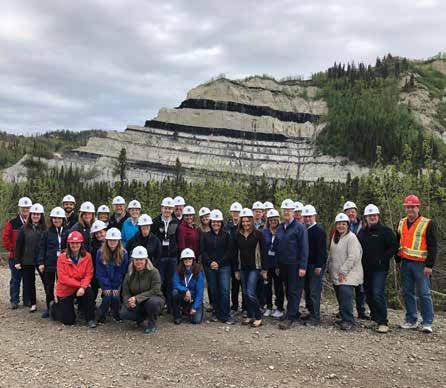
agreement established in the Alaska Native Claims Settlement Act,” says Woolston. “Our Alaska Native landowners [Calista Corporation and The Kuskokwim Corporation] have clearly communicated with us their desire to replicate that success by sharing wealth created by the Donlin Gold project.”
Be Sincere
Perhaps most importantly, communicators working on behalf of resource development projects must be sincere—Alaskans can detect a phony a mile away. Woolston sums it up this way: “Always respect elders, be open and honest, and make sure you’re listening, too. It’s obvious when people aren’t completely engaged in a conversation. Follow up with people if they had a question you need to research. It goes a long way when people feel like you care about helping them.”
Sarah Erkmann Ward, APR, is the president of Blueprint Alaska, an Anchorage public relations and advocacy firm. She is accredited in public relations by the Public Relations Society of America and was named Alaska’s “Communicator of the Year” in 2017. You can learn more about Blueprint Alaska and their strategic communications work at blueprintak.com.
Make it personal. Usibelli Coal Mine is more than giant yellow machines; it’s people who care about where they live.
72 | January 2023 Alaska Business www.akbizmag.com INDUSTRIAL SUPPORT SERVICES
Usibelli Coal Mine
Alaska is one big, small town. Relationships are critical to achieving business success, especially when it comes to resource development projects.
MARCH 29-31, 2023

HOSTED AT THE DENA’INA CONVENTION CENTER
ARCTIC ENCOUNTER
Join 1,000+ leading government officials, politicians, business executives and investors, indigenous leaders, scientists, military officials, and guests from 15+ countries at the 2023 Arctic Encounter. Proudly hosted in Anchorage, this world-class event is North America’s largest Arctic policy and business convening.
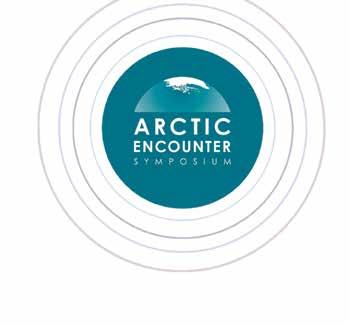

Clarity from Confusion
When businesses have questions, private research firms have answers
By Tara O’Hanley
Some exacting economists shy away from using the word “unique” to describe Alaska’s particularities, but local knowledge clearly helps to answer the types of questions that specialized consultants tackle every day. Behind the scenes, they provide answers—or, at least, very educated guesses—to big questions: How are key industries like mining, fishing, and oil and gas development expected to grow, shift, or decline? How can rural communities arrive at consensus on heated topics, and then turn those agreements into action? What would be the economic impact on the state if, say, the Alaska LNG pipeline project moved forward?
Through a combination of field work, data collection, and number crunching, local firms such as Northern Economics, McKinley Research Group, and Agnew::Beck Consulting have been
transforming confusion into clarity for decades. “Maybe it’s not that Alaska’s necessarily unique by an economic definition, but we believe that we have a context here that has to be understood to help the kind of clients we really want to help,” says Katie Berry, McKinley’s Director of Economics and Research.
“Our work is largely focused on helping Alaskan industries, communities, and people drive themselves forward and make the next set of decisions for their businesses and organizations.”
Emphasis on Ethics
“Our mission statement is that we help society make better decisions, and we really believe that and want to do that,” Marcus L. Hartley, president of Northern Economics, explains. “We really believe that we want to do things in a non-biased and objective way, that we want to maintain our integrity
and strive for excellence, that we want to do meaningful work. That kind of ethical and moral principle is a big part of our firm.”
Hartley bristles at the reputation his field has among some detractors. “It’s like, ‘Oh, just hire a consultant. They’ll give you the answer that you want.’ And that really sticks in our craw,” he says. “No, you’re not going to get the answer that you want. We’re going to give you the answer that we believe is accurate and is reflected by the information that’s available.”
A consultant’s main asset, above all else, is credibility. “We really do value our integrity and our reputation and we want to provide excellence and objectivity. And if we start to fail in that way, then we think that we start to fail as a business,” Hartley says.
Thea Agnew Bemben, co-founder and one of the five principals of

74 | January 2023 Alaska Business www.akbizmag.com INDUSTRIAL SUPPORT SERVICES
Agnew::Beck
Agnew::Beck Consulting, frames the ethical discipline of her company slightly differently. “I think sometimes when people say, ‘Oh, you’re a consultant,’ a lot of times what that means is I’m an expert in certain things and I’m going to come and bring my expertise to you. We approach it as, you’ve identified a need, or something you want to do—whether it’s a plan you want to develop, a problem you want to solve, or a program you want to start—and you’re looking to us to help you with that.”
Agnew explains, “In every community, there are people who work together well, and other ones who maybe don’t always get included, and others who often disagree. Sometimes it’s helpful to have someone from outside of those relationships bring everyone around the table. It’s about creating a structure that helps people articulate what they think is important.
“We also do a lot of work where we help our clients build a financial model for a new program that helps them see the type of staff they would need, how they would credential them, how much they could bill for their services. It helps groups walk through the analytical steps to determine if they can feasibly launch that new program or not.”
In a similar fashion, McKinley Research Group seeks to help clients move projects from the “idea” stage. According to Berry, “We really want to understand what they’re asking, why they’re asking it, how they’ll use it. Sometimes it’s a different type of project that needs us to think about what their questions have to be and especially the methodology that they need us to do to answer that question.”
Deep Roots to Answer Complex Questions
McKinley Research Group began in 1972 as the McDowell Group. It grew to become Alaska’s largest private research firm, and in 2020 it was acquired by McKinley Capital. All along, the firm has described itself as “multi-disciplinary” because its consultants have working experience in the industries for which the firm conducts research. Berry says, “We have folks who have fished for years in Bristol Bay. Our current president, Susan
Bell, grew up in the visitor industry and understands what it means to meet the bus at the dock. Our firm believes that place matters—that where we live, the communities we’re from, all of these connections really matter. And there’s nothing like standing in a place to suddenly understand data that you’ve seen.”
Consultants draw on experience to put data into context. “You can have a lot of haystacks, but if you don’t even know what the needle looks like, then it’s really hard to put something together,” according to Berry. “You can bury people in a tsunami of secondary data and have it mean nothing if we don’t understand the context and, sometimes, just physically what things look like on the ground, too.”
Consulting jobs are often easier when Alaska’s core industries of mining or oil and gas are involved, even for huge projects. “What we often find is there's a lot of secondary data to work with that's already been built up, or there's a set of companies that we can easily access to get some of that confidential data,” Berry explains.

“No, you’re not going to get the answer that you want. We’re going to give you the answer that we believe is accurate and is reflected by the information that’s available.”
www.akbizmag.com Alaska Business January 2023 | 75 INDUSTRIAL SUPPORT SERVICES
Marcus L. Hartley President Northern Economics
“What's more difficult is when we're brought to a question of feasibility, market demand, or even economic impact where there's no data or that the data that exists doesn't fit really nicely into a box of secondary data.”
Northern Economics’ Hartley concurs. “If you’ve worked in an area for a long time, you know a lot more about how to go about getting the information and making sure it makes sense,” he says. The fisheries industry, which has been a primary topic of research for the majority of Hartley’s career, is one example where it takes an expert to be able to assemble all the disparate pieces of the puzzle into something resembling a whole picture.
“The fishing industry is a little bit of an outlier in that economic employment data are nonexistent because the crew members are independent contractors, so the boats that hire them don’t report their employment data to departments of labor,” Hartley says.
Apart from that, fisheries research has plenty of numbers to crunch. “We have good data on the catch,” Hartley says. “We have good data on the number
of boats that are active on a given day or in a given week. We have the fish processors, and all their employment and wage and salary data get reported.”
That just leaves crew employment as a black box. Hartley explains that labor economists can only “generate estimates of it, but they don’t have any data, really, to do so. It’s an issue. It’s certainly something that we’ve talked about and tried to make improvements, but we still don’t have a good way to collect real information on crew members, crew member employment, and crew member incomes.”
Changing with the Tides
In other aspects of the fishing industry, however, change has been swift and dramatic during Hartley’s career. In 2022, looming questions changed to, “‘How are we going to survive if we can’t go fishing?’ I’m talking about the snow crab disaster,” he says. “And even more, recently we’re seeing a lot more questions about what will global warming do to fisheries and fish stocks. How are fish stocks going to shift, and how will fishermen and
fish processors and communities react to those shifts? No one really knows. But we’re trying to get some kind of broad-picture perspectives on that and develop some of that information.”
The changing climate also gives Northern Economics new questions to address directly, such as studies of carbon emissions. “We recently did a study on the East Coast for a scallop fishery and quantified how much carbon emissions they could save if they restructured their industry. And they could save a pretty substantial amount,” Hartley says.
Whether the client ends up liking the answers that they’re given or not, Hartley and his colleagues are cleareyed about the fact that their “job is to provide the information,” he says. “You have to decide, as an economist, whether you’re the decision maker or whether you’re the subject matter expert providing information on the decision. And I think you really have to keep those things separate.”
While Northern Economics emphasizes expertise in fisheries, maritime transportation, and




907-276-7667 www.chialaska.com Alaska Owned & Operated Since 1979 Conrad-Houston Insurance Named ‘Commercial Lines Agency of the Year’ and a ‘Circle of Excellence Agency’ by Umialik Insurance Company and Western National Insurance Group Contact us to see if we can help with your insurance needs 76 | January 2023 Alaska Business www.akbizmag.com INDUSTRIAL SUPPORT SERVICES























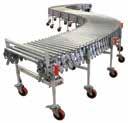


 Katie Berry working with and presenting to the McKinley Research Group team.
Katie Berry working with and presenting to the McKinley Research Group team.
MATERIAL FLOW AND CONVEYOR SYSTEMS INC. Toll Free 877-868-3569 Phone 907-868-4725 Fax 907-868-4726 6112 Petersburg St. Anchorage, AK 99507 Visit Our Website: www.materialflow.com PALLET RACK Used and New Mezzanines - All Sizes and Types Two / Three Story Structures • Cantilever Racks • Bulk Racks • Mezzanines • Lockers • Steel Shelving • Work Benches IN-STOCK IN-STOCK IN-STOCK IN-STOCK IN-STOCK IN-STOCK Manual Pallet Jacks • Gravity & Powered Conveyors • Bubble Wrap • Stretch Wrap Machines • Carousels • Turntables Hilman Rollers Plastic Bulk Boxes Plastic Bins Stretch Wrap - All Types Self Dumping Hoppers Steel Banding / Tools Packaging Supplies IN-STOCK Casters INMidwest Warehouse 100 Models in Shipment Sealing Tape MANY SIZES AVAILABLE Bulk Shelving & Racks • Carts • Hand Trucks • Platform Trucks 39,000 Sizes Fast Power Flex Conveyors Steel Aluminum Gravity Roller Conveyors www.akbizmag.com Alaska Business January 2023 | 77 INDUSTRIAL SUPPORT SERVICES
McKinley Research Group
Agnew::Beck
Agnew::Beck
Agnew::Beck
Agnew::Beck
Agnew::Beck
Agnew::Beck
infrastructure, Agnew::Beck has focused largely on community health and wellness, housing and homelessness, and cultural wellness. Agnew has found that “there’s a lot that Alaska understands and knows how to do. For example, our tribal health system is a wonderful example to other places.”

The Agnew::Beck team has worked on connecting communities to resources. “When I was just starting out, one of the things that I learned and experienced was that funding applications were just not accessible to so many people and communities,” Agnew says. “Since then, many funders have really changed how they put their money out, and in good ways.”
In addition, entities such as the Bristol Bay Economic Development Corporation and Tanana Chiefs Conference sponsor grant writing

and training, which Agnew::Beck provides to those regions. “These communities often don’t have grant writing in-house, but they do have tons of community knowledge and connections and the ability to do the work that needs to be done,” Agnew says. “We have a similar contract with the Alaska Mental Health Trust Authority, where we’ve been one of their technical assistance providers for years.”
In the field of community behavioral health, research can determine whether new services will work. “The Trust will contract with us to help them do the analysis and planning so that, when they apply for funding, it is well targeted,” Agnew says. “For example, we are working with Providence to help develop behavioral health crisis stabilization services in Anchorage.”

Just as success begets success, Agnew is optimistic about the potential to address and alleviate some of the most vexing problems faced by urban and rural parts of the state. “I think we need some vision and hopefulness about this truly incredible place where we live, with so many incredible people and communities. We need to invest in the things that make life better for the people who live here. As a business owner, of course, those investments— like housing, great schools, and a strong university system—make Alaska better for our employees and make people want to stay here. We should be working together to make good things happen and not wasting our energy on negativity and division.”
To sum it up, Agnew says, “What we need is a shared vision and focus on growing healthy communities in Alaska.”
engages community members in sometimes surprising ways, like when Meghan Holtan convened a workshop in Fairview atop her stilts.
works with rural communities around Alaska and across the Mountain West; this photo is near Togiak in the Bristol Bay region.
worked with Bristol Bay Native Association and village planning teams to develop resource centers and clinics in six villages.
78 | January 2023 Alaska Business www.akbizmag.com INDUSTRIAL SUPPORT SERVICES




















































































 By Alexandra Kay
By Alexandra Kay
Though placer mines had been in the Middle Kuskokwim area for decades, the official discovery of the Donlin Gold deposit in the late ‘80s led to one of the largest undeveloped gold projects in the world. Expected to take three to four years to construct, the mine aims to produce 1.1 million ounces of gold each year over its twenty-sevenyear lifespan. The deposit is five times the average size of its peer mines,

80 | January 2023 Alaska Business www.akbizmag.com MINING Worth Waiting For Slow but steady progress for the Donlin Gold development
according to NOVAGOLD, one of the partners on the project.
Donlin Gold has been conducting environmental studies and developing engineering plans for the site for more than twenty years. In 1996, landowners Calista Corporation and The Kuskokwim Corporation (TKC) came to an agreement that gave a company called Placer Dome mining rights at Donlin Creek. Placer Dome was eventually purchased by Barrick
Gold Corporation, and Donlin Gold is now owned in equal parts by Barrick Gold Corporation and NOVAGOLD Resources, both based in Canada.

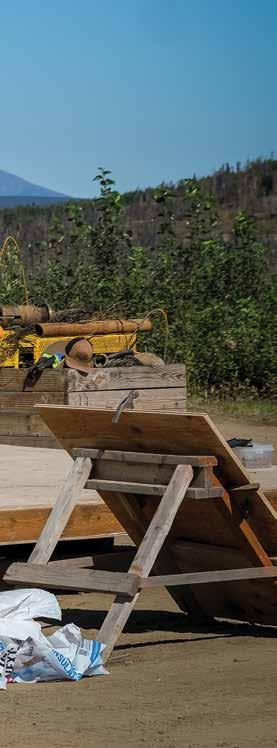
The Donlin Gold proposal is to develop an open pit, hard rock gold mine about 10 miles north of Crooked Creek. The Kuskokwim Corporation owns most of the surface land rights, and Calista Corporation owns the subsurface mineral rights and some surface land rights. According to the
environmental impact statement, “The proposed project would build mining and ore processing facilities at the site, transportation facilities, and a 315-mile buried natural gas pipeline from Cook Inlet to the mine to support electrical generation. The project would also include transportation infrastructure for barge transportation on the Kuskokwim River.”
There’s a long road between concept and reality for the gold mine,
www.akbizmag.com Alaska Business January 2023 | 81
The co-owners of Donlin Gold have yet to make the go-ahead decision, yet exploration and pre-development have kept workers busy at the site for twenty-five years.
Carter Damaska | Alaska Business
Carter Damaska Alaska Business
though. All parties involved must first make sure the project is both feasible and worthwhile. Donlin Gold’s environmental review process began in 2012. The National Environmental Policy Act (NEPA) process was initiated to determine potential environmental, social, and economic impacts of the proposed mine. The NEPA process
was completed in 2018, as was an environmental impact statement. The US Army Corp of Engineers and the US Bureau of Land Management issued the Record of Decision, which analyzed the impact of the entire project, including the mine site, transportation corridor, pipeline, and associated infrastructure.

What’s Happening Now
Exploration of the mine site continued in 2022, as well as further environmental studies and monitoring, engineering studies, and state permitting. The last year saw Donlin Gold’s largest field program in a decade, including 43,000 meters of core drilling and a $60 million budget split between the two co-owners.

 The nearest village, Crooked Creek, is itself in the middle of nowhere, so Donlin Gold built its own town to sustain years of pre-development activity.
Carter Damaska | Alaska Business
The exploration camp inspects its water quality daily, with plans to restore salmon streams damaged by 20th century placer mining.
Carter Damaska | Alaska Business
Results of the 2022 drilling season matched well with theoretical projections of the geologic resource.
The nearest village, Crooked Creek, is itself in the middle of nowhere, so Donlin Gold built its own town to sustain years of pre-development activity.
Carter Damaska | Alaska Business
The exploration camp inspects its water quality daily, with plans to restore salmon streams damaged by 20th century placer mining.
Carter Damaska | Alaska Business
Results of the 2022 drilling season matched well with theoretical projections of the geologic resource.
82 | January 2023 Alaska Business www.akbizmag.com
Carter Damaska | Alaska Business
Drilling began in late January of 2022, and the last drill shut down in the third week of September, with four drills running for most of that period. Drilling was completed ahead of schedule and under budget. The company’s geologic models have tested well, with projected findings of planned holes matching well with actual results from the drilling.
Donlin also continued some environmental studies, notes Dan Graham, general manager at Donlin Gold. “The Kuskokwim River is the way to get stuff to the mine. We mapped some of the areas that are shallower, and we tested for potential increases in erosion,” he says. The company also revisited some designs and infrastructure for the mine to improve the economics of the project. “So while we’re doing work in the field, we are also doing work on the plans to get the best project moving forward,” Graham adds.
This year’s environmental studies included mapping select areas of the Kuskokwim River, establishing some new erosion testing areas, and extending and expanding the company’s monitoring of Crooked Creek under its established Aquatic Resource Monitor Plan. “These studies are all voluntary and part of our commitment to being good stewards of the land,” says Graham.
Major state and federal permitting for the project is almost complete. The company has been maintaining its permits, defending them from challenges, and building up its environmental compliance system, says Graham.
Economic and Social Impacts


Mine construction would provide thousands of jobs for three to four years, according to Donlin Gold. Then over its 27-plus-year operating life, the mine would support between 400 and 800 jobs, with local hiring being a priority. In fact, 70 to 90 percent of the current site workforce thus far have been residents of the YukonKuskokwim region.

Contractor opportunities would also be plentiful if the project comes to fruition. These opportunities include everything from road construction and maintenance to camp services and supplies, from fuel transport and storage to equipment and tool rental.

Additionally, because of the Alaska Native Claims Settlement Act, benefits of the project would be shared statewide, since section 7(i) requires regional Alaska Native corporations to share 70 percent of the revenue they generate from resource development projects on their lands with other regional corporations. Section 7(j) then requires the regional corporations to share 50 percent of that revenue with the village corporations.
“As a result, 7(i) and 7(j) are the most direct way to spread the benefits of







the project statewide. Alaska Native shareholders statewide have benefitted from projects like Red Dog mine in the NANA region, which has shared billions of dollars in ANC revenue over the last forty years,” says Kristina Woolston, external affairs manager for Donlin Gold.

According to Woolston, 7(j) is the primary revenue stream for roughly two-thirds of the 177 Alaska Native village corporations, and Donlin is one of the only major resource projects on the horizon on ANC land that could

www.akbizmag.com Alaska Business January 2023 | 83
start to replace revenue from the Red Dog mine. Red Dog has been the primary 7(i)/7(j) contributor for more than thirty years, but activity at the mine is expected to decline within the next decade or so.
One of the Donlin Gold project’s goals is to enhance subsistence activities in the Yukon-Kuskokwim region. The jobs that Donlin already provides in the region inject income for local workers to conduct subsistence harvests. “Hunting and fishing equipment costs are high, and the gas needed to operate boats and ATVs is very expensive right now,” says Woolston. “We know the jobs we provide are already a significant help in that regard because of our current employees, most of whom come from the region.” Additionally, Donlin operates on a two week on/two week off camp rotation, which provides employees with blocks of time in which to conduct subsistence activities.
And some are benefiting from the jobs already, notes Graham, who spoke with one local elder who said everyone in their village knows who has jobs with Donlin because they’re the ones who show up with new engines for boats and other supplies.
Donlin Gold, Calista, and TKC have also provided funding and support for local culture camps, youth subsistence training activities, and other traditional practices, and the partners have contributed to scholarship programs. They have helped local communities to get rid of e-waste and set up recycling programs, as well as other community projects.
Environmental Impact
According to Woolston, Donlin Gold has a variety of project-specific plans and policies to mitigate harm to the environment. Its environmental impact plan includes forty-nine mitigation actions to ensure that subsistence activities aren’t disrupted. Those plans cover everything from controls to minimize air emissions to water quality management and treatment. The company plans to use doublehulled barges for safe water transport and natural gas for power generation because of its lower emissions compared to diesel. Reclamation for mining areas no longer being
used is another part of the planned environmental protection measures.
Donlin Gold has also received permits for fish and habitat protection, and the company voluntarily led research on the Kuskokwim River’s spring smelt run in order to plan barge traffic around the subsistence resource. And Donlin Gold will work to restore salmon habitat in nearby streams damaged by legacy placer mining.
Even for the exploration camp, there is environmental monitoring taking place that includes daily inspections and water quality, flow, and temperature measurements. The data is then compiled into year-end reports that are used to help further reduce any impact. “Modern mining is heavily regulated and controlled,” says Graham.
“Ultimately, we are being entrusted as stewards of this land along with Calista and TKC, and we take that responsibility seriously,” says Woolston. “Our environmental protection measures are based on best industry practices, which have led to over 40 years of safe mining operations in Alaska, from Red Dog to Greens Creek and more.”
Step By Step
Next steps for the Donlin Gold project include using this year’s drill data to update the project model, closing out that portion of the project. “We may do a little [drilling] next summer, but we’ll continue to advance the project review,” notes Graham. “The next big step would be updating the feasibility study before the owners decide if we’re going to sanction the project. We don’t have a date for the feasibility study yet.” That’s the next big step in the process. “We’re well over $700 million in the project to date and continue to invest in it,” says Graham. “The right mine at the right time.”
“Responsible natural resource development on Alaska Native-owned land is a critical tool, and projects are intended to provide maximum involvement by the shareholders and to promote the health, welfare, economic, and educational opportunities for ANC shareholders and their families,” says Woolston. “Donlin Gold is the invited developer of the project by Alaska Native Corporation land owners. We are grateful for the opportunity to be a partner with them.”
84 | January 2023 Alaska Business www.akbizmag.com
“Ultimately, we are being entrusted as stewards of this land along with Calista and TKC, and we take that responsibility seriously… Our environmental protection measures are based on best industry practices, which have led to over 40 years of safe mining operations in Alaska, from Red Dog to Greens Creek and more.”
Kristina Woolston External Affairs Manager Donlin Gold








GOLD & SILVER BULLION IS A GREAT INVESTMENT. Buy from an Experienced and Trusted Local Dealer. Protect Yourself from In ation and an Unstable Global Economy. ■ ANCHORAGE ■ FAIRBANKS BUY : SELL : TRADE www.oxfordmetals.com 1.907.561.5237
Recently, I was reflecting on one of my favorite mentors. She was a rockstar consultant with a brilliant mind and excellent communication skills. She was consistently thrown into challenging and high-conflict situations because of her track record for figuring out the core
issue and her ability to bring frustrated people back to the table to resolve it. If you needed something done, throw Jane* at it. She was the ultimate fixer.
She taught me a skill early in my career that I’ve never forgotten: she was an expert at classifying the urgent from the non-urgent.
I remember in my early twenties, rushing down a long hallway to gain her attention. I was so focused on getting her advice that I often would track her down and take the few minutes she had between meetings to walk hallways with her. In this particular moment, she stopped. Paused. Took a breath. And
86 | January 2023 Alaska Business www.akbizmag.com BALANCED BOUNDARIES
then stated something to me very gently and very calmly: “This is not urgent. We are not curing cancer. No one is dying in this moment. Remember that. Now, what exactly do you need?”
This was a gift. It was a great lesson early in my career.
Now the interesting thing about Jane is that she was also a mom. A single mom. She was a rockstar in both her personal and professional life. I was lucky enough to get to witness her in both roles. We became friends over the years, as is often the case after working many long hours in corporate spaces.
I bring this up because, now that I’m a parent myself, I realize the role of parenting often requires us to attend to multiple matters of seemingly urgent issues all the time. Spilled milk. Broken toys. Ripped knees in faded jeans. Tears, frustrations, confusion— all of which require patience and compassionate understanding.
A few weeks ago, I was connecting with my distraught daughter. I took a moment, channeled my inner Jane, and I paused.
I looked at her and realized she was rushing and bringing an unnecessary sense of urgency to the moment. And as a young child often does, she simply needed to pause, take a breath, and be reminded that she was OK. This moment was OK. And we had everything we needed in that moment to meet her needs.
I de-escalated the urgency.
This was a gift for her. You could watch her whole demeanor shift. My daughter took a breath. She smiled. And then we went to work together, tackling the difficult thing that no longer seemed so overwhelming.
There is a gift in de-escalating a moment, decoupling the urgent from the non-urgent.

As leaders, our ability to do this is a skill. A skill that can be learned and improved with practice and patience. Our ability to de-escalate a non-urgent matter is a gift to our colleagues, our teams, and our companies. It alleviates unnecessary stress. It creates space and opportunity for clarity to arise in the moment. It allows us to maintain and focus our energies toward the
Anchorage
Fri. Feb. 17, 2023

Dena'ina Center
8:30 a.m. - 1:00 p.m.
AnchorageGoRedLuncheon.heart.org
Fairbanks
Fri. March 24, 2023


Westmark Fairbanks Hotel & Conference Center



8:30 a.m. - 1:00 p.m.


FairbanksGoRedLuncheon.heart.org





©2023 American Heart Association, Inc., a 501(c)(3) not-for-profit. All rights reserved. Go
for Women is a
Unauthorized use prohibited.
This is the mark of a true leader: someone who can be there to support when it's needed and someone to lend the trust and courage to someone else who can handle the issue themselves.
Red
registered trademark of the AHA. The Red Dress Design is a trademark of the U.S. DHHS.
Live
& Vaping
Nationally sponsored by:
Fierce, Life is Why and Presenting sponsor: Live Fierce, End Tobacco
sponsor:
Media
www.akbizmag.com Alaska Business January 2023 | 87
Cinderella Tollefsen, MBA, FACMPE Alaska Trauma & Acute Care and Alaska Health Services 2023 Go Red for Women Chair, Anchorage Local sponsors:
sponsor:
highest priorities and most vital issues. Our capacity to do this—and to do this well—impacts both our decisions and our actions.
When we decouple an urgent moment from a non-urgent moment, we are also offering individuals and teams relief. We get to show up as a strong and supportive presence instead of adding to the chaos. This enhances our connection with others, improves our team’s trust in us, and strengthens the team as a whole. Over the years, I’ve learned some valuable tools and techniques that support this decoupling process.
“Is this Truly Urgent?”
Is there simply a feeling of urgency surrounding the situation? Perhaps this is stemming from the situation at hand, conflict from a meeting that is unaddressed, or a habitual patterned response to someone or something.
The feeling of urgency can range from stressful or pressured to even a sense of dread. Alternatively, urgency can sometimes feel more like excitement, adrenalin, or a sense of power and accomplishment from continuous “fixing.” These are two sides of the same coin.
When we are stuck in perpetual states of urgency (individually or within teams), there’s an underlying chronic stress which is not useful and eventually harms our bodies and minds. We lose focus. We feel scattered and unproductive. Tensions within teams are a good indicator of this.
Reflect on situations when you’ve experienced this personally and within your teams. Can you identify moments of unnecessary urgency? What impact did those have on you personally, and within your team? What actions or redirections might have supported you at that time?
Triage & Tradeoffs
Take a moment to look at your choices and consider the tradeoffs of prioritizing one action over others. When we say “yes” to something, we always are saying “no” to something else. Be aware of this as you prioritize something as urgent. Recognize the ripple effects that will occur for other stakeholders, colleagues, and projects. Take the time to
recognize the potential impact prior to accepting the task. Ensure stakeholders are aware of the issue and that the necessary conversations and directives are taking place to address impacts, should the issue truly warrant the highest priority.
Shift the State & Let the Buck Stop with You
The gift my friend and mentor gave me was more than simply the labeling and classification of an urgent item in contrast to another item. It was the recognition and modeling she gave me to stand in that urgency and be the decider.
Take the issue in—fully within that moment—and don’t offload it. Drive it to completion or release it fully without the urgency. Uncouple the unnecessary stress surrounding that moment. This is the mark of a true leader: someone who can be there to support when it's needed and someone to lend the trust and courage to someone else who can handle the issue themselves.
Stand in the urgency. Decide. Shift the state or drive it to completion. That’s the practice. That’s the gift.
Next time someone comes to you with something urgent, consider whether it is truly urgent. Play with and explore your response based on the three tips above. Then see if you can offer some of Jane’s wisdom and provide the gift of de-escalation to those around you.
*Name changed for confidentiality.
Woodrie Burich is the owner of the Integration Group and founder of the Boundaries Before Burnout group coaching program. Her mission is to empower professionals to create sustainable and thriving work lives that enable them to enjoy more, stress less, and connect with their communities in positive and meaningful ways. Connect with her on LinkedIn and learn more at integratingwork.com.

88 | January 2023 Alaska Business www.akbizmag.com
Our ability to de-escalate a non-urgent matter is a gift to our colleagues, our teams, and our companies. It alleviates unnecessary stress. It creates space and opportunity for clarity to arise in the moment.
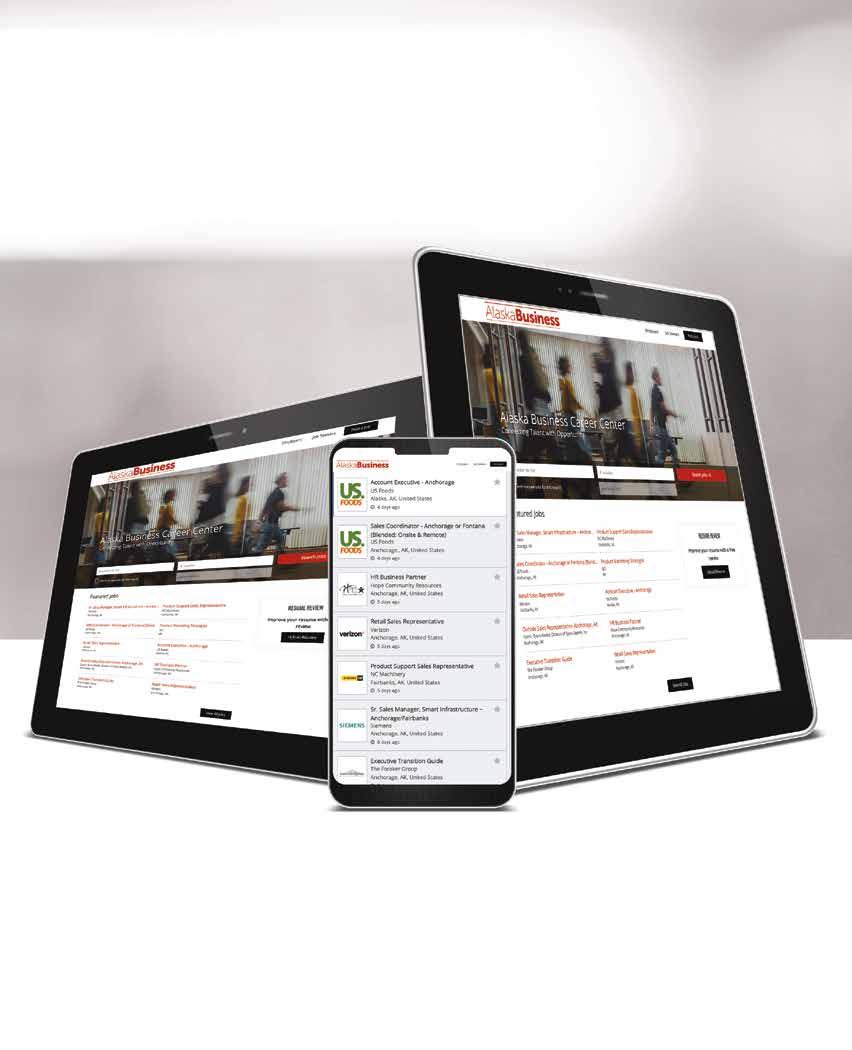
Looking for Employees (or a job)? + Careers akbizmag.careerwebsite.com Reach a wider audience through a network of sites with a single job listing.
Residential Mortgage
Anchorage-based real estate firm Residential Mortgage is extending its reach into Arizona and Colorado. The company hired loan originators Ron and Brooke Schlachter in Phoenix and Sheila Kennelley in Denver. The two new branches add to the eleven throughout Alaska for the Northrim Bank subsidiary. residentialmtg.com
Aleutian Airways
A new regional airline expands travel options for Unalaska. Aleutian Airways began service in November with two flights each weekday from Anchorage to Dutch Harbor and back. The new competitor cuts the fare for a one-way ticket from $1,000 to $659, while roundtrip tickets cost just under $1,000, comparable to Ravn Alaska’s service to Unalaska. flyaleutian.com
Bethel Native Corporation | GCI
A pair of federal grants pay for Bethel Native Corporation (BNC) and GCI to bring broadband internet to more than 10,000 customers in the YukonKuskokwim Delta. The two projects combined are called the Airraq Network (pronounced EYE-huck), after the traditional Yup’ik game similar to cat’s cradle, which translates as “string that tells the story.” A $42.4 million grant lets BNC connect to a planned Nushagak Electric & Telephone Cooperative long-haul fiber and run 405 miles underwater from
Dillingham to Kuskokwim Bay, then overland upriver to Bethel, connecting four villages along the way. GCI has $31 million to construct long-haul fiber in five other communities. bethelnativecorp.org | gci.com
Doyon, Limited
Visitors to Denali National Park and Preserve could skip trains or automobiles and arrive on planes at an airport in Healy that Doyon, Limited wants to build. The Fairbanks-based Native corporation is joining the Denali Borough’s efforts to build a jetliner-capable airport. One site on state land is a 20-minute drive from the park entrance. Doyon would build the terminal, estimated at $18 million, while the state would build the runway, likely with some federal funds, for an estimated $50 million. Doyon aims to have jets landing at Denali in 2028. doyon.com
BlueCrest Energy
After three years without drilling in Cook Inlet, BlueCrest Energy plans to restart in 2023. The company submitted a plan with state regulators for its H10 Trident Fishbone in the Cosmopolitan unit, offshore from Anchor Point.

The well would start on dry land and reach underneath the seabed, forking three ways with eight wells on each branch curving up into the oil reservoir, for twentyfour wells from one surface bore.
The drilling program depends on BlueCrest securing investment funds. BlueCrest has spent the
last three years upgrading its existing production and processing equipment. bluecrestenergy.com
Far North Digital
The company that built fiber optic cable from Fairbanks to Prudhoe Bay is setting its sights far to the east and west. Far North Digital, an Anchorage company co-founded by former legislator and mayor Ethan Berkowitz, is forming a consortium with Cinia of Finland and ARTERIA Networks Corporation of Japan to build a trans-Arctic cable. The joint development corporation, Far North Fiber, anticipates completing more than 10,000 miles of cable connecting Europe to Asia by the end of 2026. Alcatel Submarine Networks has been selected to install the cable. fn-digital.com
AGDC | Hilcorp
The Alaska Gasline Development Corporation (AGDC) and Hilcorp Alaska signed a memorandum of understanding with two Japanese firms to assess carbon sequestration and ammonia energy in Southcentral. AGDC has been touting the decarbonization potential of a liquified natural gas pipeline to a terminal in Nikiski next to an idled ammonia factory, and the agreement with Mitsubishi and TOYO Engineering is a step toward defining that potential more exactly. AGDC is even promoting the gas treatment plant to be built on the North Slope at the head of the pipeline as “the largest carbon capture plant in the world.” agdc.us | hilcorp.com
ECONOMIC INDICATORS
ANS Crude Oil Production
499,140 barrels 1.1% change from previous month 11/29/2022
Source: Alaska Department of Natural Resources
ANS West Coast Crude Oil Prices
$89.63 per barrel -3.6% change from previous month 11/30/2022
Source: Alaska Department of Natural Resources
Statewide Employment
360,600 labor force 4.5% unemployment 10/1/2022. Adjusted seasonally.
Source:
90 | January 2023 Alaska Business www.akbizmag.com
INSIDE ALASKA BUSINESS
US Bureau of Labor Statistics

LifeMed Alaska
A veteran of the US Marine Corps is the new CEO of LifeMed Alaska. The air and ground ambulance service selected Grace K. Greene to lead the company. Greene was the president of TOTE Maritime Alaska until last year, when she moved to Oak Brook, Illinois to take a job as senior vice president of Hub Group. Greene attended the US Naval Academy and was commissioned into the Marine Corps, working in logistics and aviation safety.
Natives of Kodiak
The Alaska Native urban corporation for Kodiak selected a successor to longtime President and CEO Jim Erickson, who is retiring. Natives of Kodiak hired Monica James, most recently the chief operating officer at Aleut Corporation. James is a shareholder of Calista Corporation and Bethel Native Corporation. James was previously executive vice president and COO at Calista and also served as president of Yulista Holding, the Alabama-based aerospace branch of Calista. James also served as vice president of business operations and administration for Alaska Aerospace, the state-backed owner and operator of the Pacific Spaceport Complex on Kodiak Island.

Alaska Communications
planning and construction strategy, engineering design and execution, and helps set network vision. Ayers joined the Anchorage-based telecom at the start of 2022 after working for twenty years at cross-town rival GCI. Ayers is a UAA graduate and a licensed professional engineer.
Northrim Bank
Northrim Bank recently promoted four officers and managers, rehired another, and added one more financial industry veteran to the team.
Newest to Northrim is Samantha Schemm, who joined the bank in September as AVP, Deposit Applications Manager. Schemm brings more than fifteen years of experience in retail banking, back-office operations, and IT.
Jason Gentry returns to Northrim as VP, Commercial Loan Officer. Gentry grew up in Utqiaġvik and attended UAF. He has more than ten years of experience in the financial industry in Alaska and Washington.
Alaska Communications promoted Mark Ayers to Chief Technology Officer. In that role, Ayers leads information technology,



Jodie Stone, promoted to AVP, Card Services Manager, started at Northrim two years ago and has twenty-four years of experience in retail banking and backoffice branch support.


Cindy Cheely, the new Assistant Branch Manager at the Southside Financial Center, has been with Northrim Bank for thirteen years and has more than twenty-five years of experience in the financial services industry. She has worked in a variety of departments at Northrim, including financials sales, lending, and retail banking.
Integrated Prescription Management
Narus
Ben Schulman is promoted to VP, Commercial Loan Officer. Schulman started at Northrim Bank in 2010 and has twentytwo years of banking experience. He holds a bachelor’s degree in Business Management from Corban University in Oregon.
Johnico Bashford-Blumer received a promotion to AVP, Branch Manager at the Lake Otis Community Branch. BashfordBlumer has been with Northrim for more than two years and has more than thirteen years of management experience. He earned his MBA degree from Colorado Technical University.
A California-based pharmaceutical company chose an Alaskan for its executive suite. Erin Narus will continue to work from Alaska as Vice President of Clinical Services for Integrated Prescription Management. Narus was most recently manager of the Pharmacy & Ancillary Services Unit for the Alaska Division of Health Care Services. Narus earned a bachelor’s degree in chemistry from UAF, a Master of Science Jurisprudence from Seton Hall University, and a Doctor of Pharmacy from the University of Wisconsin – Madison.
Municipality of Anchorage
The new Public Works Director for the Municipality of Anchorage is Kent Kohlhase, elevated from his previous position as Director of Project Management and Engineering. Mayor Dave Bronson appointed Kohlhase to the
Greene
Ayers
92 | January 2023 Alaska Business www.akbizmag.com RIGHT MOVES IS BROUGHT TO YOU BY NORTHERN AIR CARGO RIGHT MOVES
James
Keeping Alaska Open for Business
position, filling the vacancy created when Lance Wilber was promoted to Executive Director of Community Development. Kohlhase graduated from UAF in 1993 with a degree in civil engineering and worked for the US Forest Service in Anchorage for twenty-two years. He started working with the Municipality of Anchorage in 2013 and became Director of Project Management and Engineering in 2019.
Alaska Legislature
Twenty new members are joining the Alaska Senate and House of Representatives as the session starts this month, as a result of the November 2022 elections.
House District 2 elected Rebecca Himschoot of Sitka, an elementary school teacher and Sitka Assembly member since 2020.
Born in New Orleans, Armstrong moved to Anchorage in 2019 and is CEO of Wild Awake Creative, a local publishing firm.
Senate District I—covering Downtown, Government Hill, and Northeast Anchorage—elected Löki Tobin. She was born in Nome, studied nonprofit management and rural development at UAF, and was a legislative aide to her predecessor, Senator Tom Begich, in the last two sessions.
House District 18—including Government Hill, Northeast Anchorage, and Joint Base Elmendorf-Richardson—elected Cliff Groh. The attorney and former state prosecutor was a legislative aide in 1981 when the Permanent Fund Dividend was created.
Senate District J—covering Mountain View, Airport Heights, and U-Med area—elected Forrest Dunbar. The attorney and National Guard officer was in his third and last term as a member of the Anchorage Assembly.
House District 19—including Mountain View and Airport Heights—elected

elected Stanley Wright. A US Navy veteran of Iraq and a legislative liaison, Wright studied business management and marketing at UAA.
House District 23 in the Eagle River Valley elected Jamie Allard. The daughter of an immigrant from Chile, Allard worked for the federal government and was a member of the Anchorage Assembly since 2020.
House District 28 in the Tanaina/Lakes area elected Jesse M. Sumner of Wasilla. The Matanuska-Susitna Borough Assembly member and home builder by trade won a four-way Republican ranked-choice runoff.
House District 31 in Downtown Fairbanks elected Maxine L. Dibert, a teacher and consultant for the PBS TV series Molly of Denali.
Senate District D elected Jesse Bjorkman, a teacher at Nikiski Middle/High School and Cook Inlet drift fisher who served one term on the Kenai Peninsula Borough Assembly.

Genevieve Mina. One of the state’s first Gen Z lawmakers, the former legislative and Anchorage Assembly aide was most recently program director at North Star Group for Alaska’s Build Back Better initiatives.
House District 32, covering East Fairbanks and Fort Wainwright, elected Will B. Stapp of North Pole. Born in Seattle, the US Army veteran of Iraq came to Alaska with the Airborne Infantry and is now an insurance agent.
House District 7 elected Justin Ruffridge of Soldotna. Born in Idaho, the pharmacist and business owner has been a member of the Soldotna City Council since 2018.
House District 11 in Anchorage’s Lower Hillside elected Julie Coulombe, a marketing director and member of the city commission on Housing, Homelessness, and Neighborhood Development.
House District 14 in Spenard elected Alyse Galvin, the organizer of Great Alaska Schools and owner of Galvin Education Consulting who was twice a candidate for US House.

House District 20 in Anchorage’s U-Med area elected Andrew Gray. Born in Texas, he traveled the world as a teacher, singer, and yoga instructor. Gray now hosts the “East Anchorage Book Club” podcast and works as a physician assistant for the Alaska Army National Guard and Veterans Administration.
House District 34—including Salcha, Two Rivers, and Eielson Air Force Base—elected Frank J. Tomaszewski of Fairbanks. The Fairbanks North Star Borough Assembly member grew up in Fox and is an electrical contractor by trade.

House District 16, the Anchorage Airport neighborhood, elected Jennie Armstrong.
House District 21 in South Muldoon elected Donna Mears, a civil engineer originally from New Jersey. Mears earned a bachelor’s degree in bioenvironmental engineering from Rutgers University and a master’s degree in urban planning from the University of Michigan.
House District 22 in North Muldoon
House District 35—including College, Ester, and Chena Ridge—elected Ashley E. Carrick of Fairbanks. She studied public health at UAF, started a consulting service, and was executive director of the Tanana Valley Watershed Association while working as chief of staff to outgoing Representative Adam Wool.
House District 38 elected Alaska’s youngest legislator, CJ McCormick of Bethel. McCormick is a communications specialist with Yukon-Kuskokwim Health Corporation. He was appointed to the Bethel City Council in 2020 at age 23 and was elected Vice Mayor in 2021.
For more information, please visit us at www.nac .aero. Northern Air Cargo is committed to getting your cargo where it needs to be, on time, so you can worry about what really matters. www.akbizmag.com Alaska Business January 2023 | 93
Kohlhase
ALASKA TRENDS
Perhaps the most discouraging statistic in the Alaska Department of Labor and Workforce Development’s cost of living publication is the Affordability Index. That measures how many monthly paychecks it takes to afford a 30-year mortgage on a typical house. In most places, the number of paychecks is more than one, which strikes a blow to the traditional vision of a single-earner household.
The encouraging part of that statistic, though, is that there is at least one place where the single-earner household can exist: in Fairbanks, the Affordability Index is less than one paycheck per household.
At 4.9 percent, price increases in 2021 in Alaska were the highest since 1990, and they only ballooned going into 2022. While inflation retreated as the year progressed, 2022 is liable to end up with double-digit increases. Still, state economist Neal Fried likes to point out that Alaska had annual inflation above 5 percent from 1974 to 1982, yet those were Alaska’s boom years, albeit for once-in-a-lifetime reasons. His point is that high inflation doesn’t have to spell economic doom.
This edition of Alaska Trends checks the cost of living across Alaska and over time.
SOURCE: July 2022 Alaska Economic Trends | Alaska Department of Labor & Workforce Development
2022 Cost Comparison
Drop in Rank
In 2022, Alaska fell to fourth-highest place for healthcare premiums. Alaska’s premium was within a dollar of last year, but costs jumped for West Virginia and Vermont and remained high in Wyoming.
Deep Breath...
A 1-hour yoga session in Juneau is $3 LESS than the national average.
$160 Smile
An average dental cleaning in Juneau costs $160, the most expensive nationwide.
Give or
40¢
Kraft parmesan
Kleenex
dozen
$10 $20
Take
Eggs statewide are within 40 ¢ of the national average.
cheese
6-pack of Heineken Quarter Pounder w/Cheese
eggs 1-hour yoga class dry clean 2-piece suit 11.5 oz ground co ee
— US average Anchorage Fairbanks Juneau
94 | January 2023 Alaska Business www.akbizmag.com
$3 Gas
Healy, which is on the Railbelt, had the lowest-priced gas at $3.59 per gallon while the gas price for Atka is $8.35.
Mat-Su Homes Sold for $418K
Homes in the Mat-Su Borough sold for $15K more than the statewide average the first time in recent history that area outpaced the state.
35% Increase in Ketchikan Homes
The average Ketchikan Gateway Borough home sold at $503K, a 35% increase over last year.
Alaska's Most Affordable Place
Fairbanks was the only place in late 2021 where a single average earner could afford a typical house.
The average Alaska house took 1.14 paychecks to afford in 2021. In Anchorage, it took 1.2 paychecks. In the Mat-Su Borough, 1.32.
Heating Fuel and Gas Costs by Town
Heating fuel Reg. Gasoline
Akiak $5.19 $4.92
Anaktuvuk Pass* $1.50 $7.20
Atka $7.50 $8.35
Bethel $4.82 $4.33
Chenaga Bay $5.52 $6.04
Chignik $3.96 $3.92
Circle $3.30 $4.70
Deering $4.48 $4.79
Dillingham $4.57 $5.06
Eagle $4.00 $4.75
Emmonak $5.12 $5.54
Fairbanks $3.59 $3.85
Galena $5.42 $6.90
Gambell $4.69 $5.72
Glennallen $3.29 $4.25
Golovin $3.90 $4.00
Healy $3.10 $3.59
Holy Cross $6.05 $6.17
Homer $3.55 $3.90
Hoonah $4.71 $4.88
Hooper Bay $6.62 $5.41
Juneau $3.87 $3.60
King Cove $3.22 $4.74
Median Rent $1,279 per mo.
This is a $100 increase over last year due to rising costs, falling vacancy rates, and growing demand.
Sitka, City and Borough $1,349
Anchorage, Municipality $1,339
Fairbanks North Star Borough $1,305
Kodiak Island Borough $1,270
Chugach Census Area $1,265 Juneau, City and Borough $1,260
Ketchikan Gateway Borough $1,153
Matanuska-Susitna Borough $1,092
Kenai Peninsula Borough $1,023
Wrangell-Petersburg Census Area $929
Average House Price $405K
Ketchikan Gateway Borough $503,200
Juneau, City and Borough $481,451
Anchorage, Municipality $445,408 Matanuska-Susitna Borough $418,412 Bethel Census Area $414,286
Kodiak Island Borough $367,500 Kenai Peninsula Borough $358,529
Kodiak $3.68 $3.78
Kokhanok $7.00 $7.00
Kotzebue $6.23 $6.20
Mountain Village $6.29 $6.61
Nenana $3.81 $3.90
Noorvik $5.64 $5.20
Nuiqsut* $2.30 $5.00
Nulato $5.00 $6.00
Pelican $4.82 $5.12
Pilot Station $7.20 $7.00
Port Lions $5.35 $5.45
Ruby $5.50 $5.50
Sand Point $4.65 $3.97
Shishmaref $3.91 $4.43
Unalaska $4.37 $4.18
Wales $4.64 $4.89
Wrangell $3.91 $4.32
*North Slope communities' residential heating fuel costs are subsidized.
www.akbizmag.com Alaska Business January 2023 | 95
What book is currently on your nightstand?
Shadows on the Koyukuk: An Alaskan Native’s Life Along the River by Sidney Huntington and How to Be Your Dog’s Best Friend by the Monks of New Skete.
What vacation spot is on your bucket list? Iceland.
If you could domesticate a wild animal, what animal would it be? We had a black wolf that hung out at Mendenhall Glacier for a number of years and got a chance to ski with it, which was really amazing.
What’s the first thing you do when you get home after a long day at work? Walk the dog. Feed the dog.
What charity or cause are you passionate about?
SEADOGS (Southeast Alaska Dogs Organized for Ground Search).

96 | January 2023 Alaska Business www.akbizmag.com
Carter Damaska Alaska Business
Geoff and Marcy Larson
On a weekly basis, the co-founders of Alaskan Brewing Company tromp into the muskeg on Douglas Island with their dog, Tango, to hone the retriever’s trailing skills. A SEADOGS volunteer hides in the brush, and Tango sniffs them out. The exercise keeps Geoff and Marcy Larson and their pooch ready for when Alaska State Troopers call for help to locate a missing person.

“It’s sometimes a very traumatic period for a small community,” Geoff says, “but it’s amazing to see how small communities pull together.”
The Larsons have been together since 1979. He was a chemical engineer and she was a photojournalist, although Marcy switched to bookkeeping so she could earn a steady paycheck. They married in 1985, and a year later they used a Prohibition-era recipe to create Alaskan Amber. They now distribute beers in more than twenty other states, as far east as Ohio. By sales volume, it’s the 19th largest craft brewery in the country.
Yet the Larsons still have time to devote to Tango—and to the puppy they adopted last summer, now in training as their newest search dog.
Alaska Business: What do you do in your free time?
Marcy Larson: What free time? [Geoff laughs] The time that we do have [outside of work] we dedicate to search and rescue. Geoff Larson: I’d also say people. When we have free time, we probably search out people; we go and enjoy others’ company.
AB: Is there a skill you’re currently developing or have always wanted to learn?
Marcy: We’re always working on teamwork because that is so crucial in so many things.
AB: What’s the most daring thing you’ve ever done? Marcy: I’ve jumped out of an airplane... Geoff: A perfectly good airplane! Marcy: …a hundred times. So how ‘bout that?
AB: What’s your favorite local restaurant? Geoff: My kitchen. Why? We have so much fresh seafood here. We enjoy crabbing. Marcy: And he’s a great chef, I will say.
AB: Dead or alive, who would you like to see perform live in concert?
Marcy: Hobo Jim. Really miss that guy. He was awesome.
AB: What’s your greatest extravagance? Marcy: We were able to invite all of our nieces and nephews [for their birthdays] to come up and experience Alaska with an incredible trip. It’s their choice: a rafting trip, a mountain trip, whatever. We just get to go along.
AB: Have you ever had a supernatural experience? Geoff: I get a number of those by being out in the wild. Sitting there on a mountain side and having a cloud just appear in front of me and evolve. It’s like putting on a show just for me. It’s magical. Marcy: I’ve been hit by lightning [she laughs]. I didn’t get hurt. I mean, I got thrown and knocked out, but I got up and I was fine. When I was twelve. In Florida.
AB: What’s your best attribute and worst attribute?
Geoff: It’s focus. I focus, and that also can be interpreted as stubborn. That is maybe a strength, to be able to sit there and focus on something, but sometimes you don’t see the forest because you’re looking at the tree. Would you say that’s right? Marcy: Yeah, probably. And my best attribute would probably be organization, trying to keep this guy in order and picked-up after… My worst is probably overestimating what I can do, getting ahead of myself and telling people I’m gonna do too many things.
AB: Other than your current career, if you were a kid today, what would your dream job be?
Geoff: Raising dogs. The care of an animal is extraordinarily important, and people don’t really understand the importance of a lot of that nurturing, development of puppies.
AB: What is your favorite way to exercise?
Marcy: Chasing after our dog [both laugh].
www.akbizmag.com Alaska Business January 2023 | 97 OFF THE CUFF
Ahtna, Inc. .............................................................3 ahtna.com
Airport Equipment Rentals 99 airportequipmentrentals.com
Alaska Dreams Inc ............................................. 63 alaskadreamsinc.com

Alaska Materials 71 alaskamaterials.com
Alaska Pacific University .................................... 76 alaskapacific.edu
Altman, Rogers & Co. 27 altrogco.com
American Heart Association ............................. 87 heart.org
Ampersand / AlasConnect Inc 62 ampersandtech.com
Anchorage Convention Centers ....................... 35 anchorageconventioncenters.com
Arctic Encounter 73 arcticencounter.com
Arctic Information Technology ........................ 19 arcticit.com
Bering Straits Native Corp 45 beringstraits.com
Calista Corporation .............................................. 7 calistacorp.com

Chugach Alaska Corporation 43 chugach.com
CIRI ..................................................................... 40 ciri.com
Conrad-Houston Insurance Agency 76 chialaska.com
Construction Machinery Industrial......................2 cmiak.com
Cook Inlet Tug & Barge Inc 71
Craig Taylor Equipment..................................... 67 craigtaylorequipment.com
Credit Union 1 13 cu1.org
Davis Constructors & Engineers Inc ................. 29 davisconstructors.com
Donlin Gold 69 donlingold.com
First National Bank Alaska ....................................5 fnbalaska.com
Great Originals Inc 53 greatoriginals.com
Hecla Greens Creek Mining Company 83 hecla-mining.com
JEFFCO Inc. ....................................................... 61 jeffcogrounds.com
Junior Achievement 17 ja-alaska.org
Kelley Connect .................................................. 16 kelleyconnect.com
Landye Bennett Blumstein LLP 42 lbblawyers.com

Lynden ............................................................. 100 lynden.com
Material Flow & Conveyor Systems, Inc. 77 materialflow.com
MT Housing Inc. 55 mthousing.net
Nana Regional Corp .......................................... 41 nana.com
NCB 25 ncb.coop
New Horizons Telecom, Inc. .............................15 nhtiusa.com
Northern Air Cargo
Oxford Assaying & Refining Inc ........................ 85 oxfordmetals.com
Pacific Pile & Marine 91 pacificpile.com
Parker, Smith & Feek .......................................... 79 psfinc.com
Samson Tug & Barge 61 samsontug.com
Satellite Alaska ................................................... 16
SES Government Solutions ................................ 9 sessd.com
Span Alaska Transportation LLC 57 spanalaska.com
Stellar Designs Inc ............................................. 27 stellar-designs.com
T. Rowe Price 37 alaska529plan.com



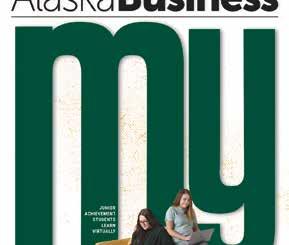
The Kuskokwim Corporation ............................ 39 kuskokwim.com
The Odom Corporation 23 odomcorp.com
The Plans Room 75 theplansroom.com
UA Local 375 Plumbers & Pipefitters ................ 59 ualocal375.org
UAF eCampus 64 ecampus.uaf.edu
1-year PRINT + DIGITAL ACCESS to Alaska Business and the Annual Power List Subscribe by January 31th to receive the March issue! Regular price $39.95 Sales Price: $20 Use Promo Code: Access23 98 | January 2023 Alaska Business www.akbizmag.com ADVERTISERS INDEX

Thank


























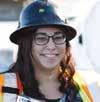












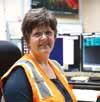











You Alaska! Thank you to our friends, neighbors, and valued customers for your ongoing support and partnership, and special thanks to each of our dedicated employees for their continued care, expertise, and ingenuity as we all work together to keep Alaska moving. We look forward to continuing to serve our communities by providing multi-modal transportation and logistics solutions across the entire state!





















 By Katie Pesznecker
By Katie Pesznecker




 By Tracy Barbour
By Tracy Barbour
 By
By
 Orr
Orr

 By Tasha Anderson
By Rachael Kvapil
By Tasha Anderson
By Rachael Kvapil
 By Sarah Erkmann Ward
By Sarah Erkmann Ward














































 By Flora Teo and Beth Barnes
By Flora Teo and Beth Barnes
 By Tasha Anderson
By Tasha Anderson










 By Scott Rhode
By Scott Rhode
 Andy Elliott
Andy Elliott





















 DAVIS CONSTRUCTORS & ENGINEERS CONGRATULATES
DAVIS CONSTRUCTORS & ENGINEERS CONGRATULATES
















 Upper One team members providing support for a fundraiser for the Alaska SeaLife Center in 2021.
Upper One team members providing support for a fundraiser for the Alaska SeaLife Center in 2021.

 By Vanessa Orr
By Vanessa Orr













 Eden Hopson, winner of the 2022 girls’ one-foot high kick, goes for her winning kick.
Cook Inlet Tribal Council
Coaches and team members cheer the athletes during the 2022 seal hop event.
Cook Inlet Tribal Council
Eden Hopson hugs her coach and mom, Joanna Hopson, after landing her winning one-foot high kick.
Eden Hopson, winner of the 2022 girls’ one-foot high kick, goes for her winning kick.
Cook Inlet Tribal Council
Coaches and team members cheer the athletes during the 2022 seal hop event.
Cook Inlet Tribal Council
Eden Hopson hugs her coach and mom, Joanna Hopson, after landing her winning one-foot high kick.











































































 Model success. By taking care of the Interior, Usibelli Coal Mine presents a positive image through its everyday actions.
Usibelli Coal Mine
Model success. By taking care of the Interior, Usibelli Coal Mine presents a positive image through its everyday actions.
Usibelli Coal Mine






























































 By Alexandra Kay
By Alexandra Kay





 The nearest village, Crooked Creek, is itself in the middle of nowhere, so Donlin Gold built its own town to sustain years of pre-development activity.
Carter Damaska | Alaska Business
The exploration camp inspects its water quality daily, with plans to restore salmon streams damaged by 20th century placer mining.
Carter Damaska | Alaska Business
Results of the 2022 drilling season matched well with theoretical projections of the geologic resource.
The nearest village, Crooked Creek, is itself in the middle of nowhere, so Donlin Gold built its own town to sustain years of pre-development activity.
Carter Damaska | Alaska Business
The exploration camp inspects its water quality daily, with plans to restore salmon streams damaged by 20th century placer mining.
Carter Damaska | Alaska Business
Results of the 2022 drilling season matched well with theoretical projections of the geologic resource.































































































